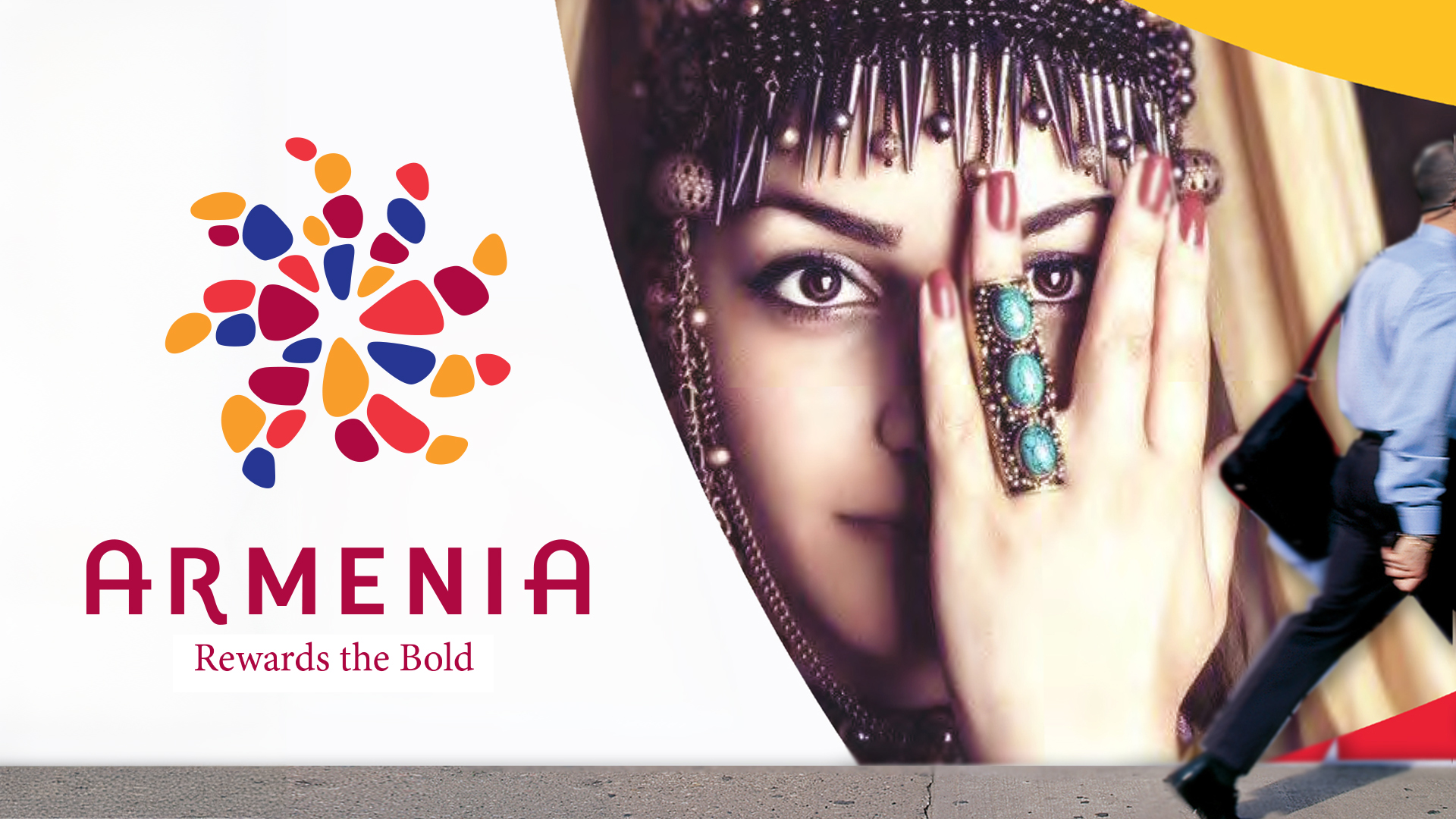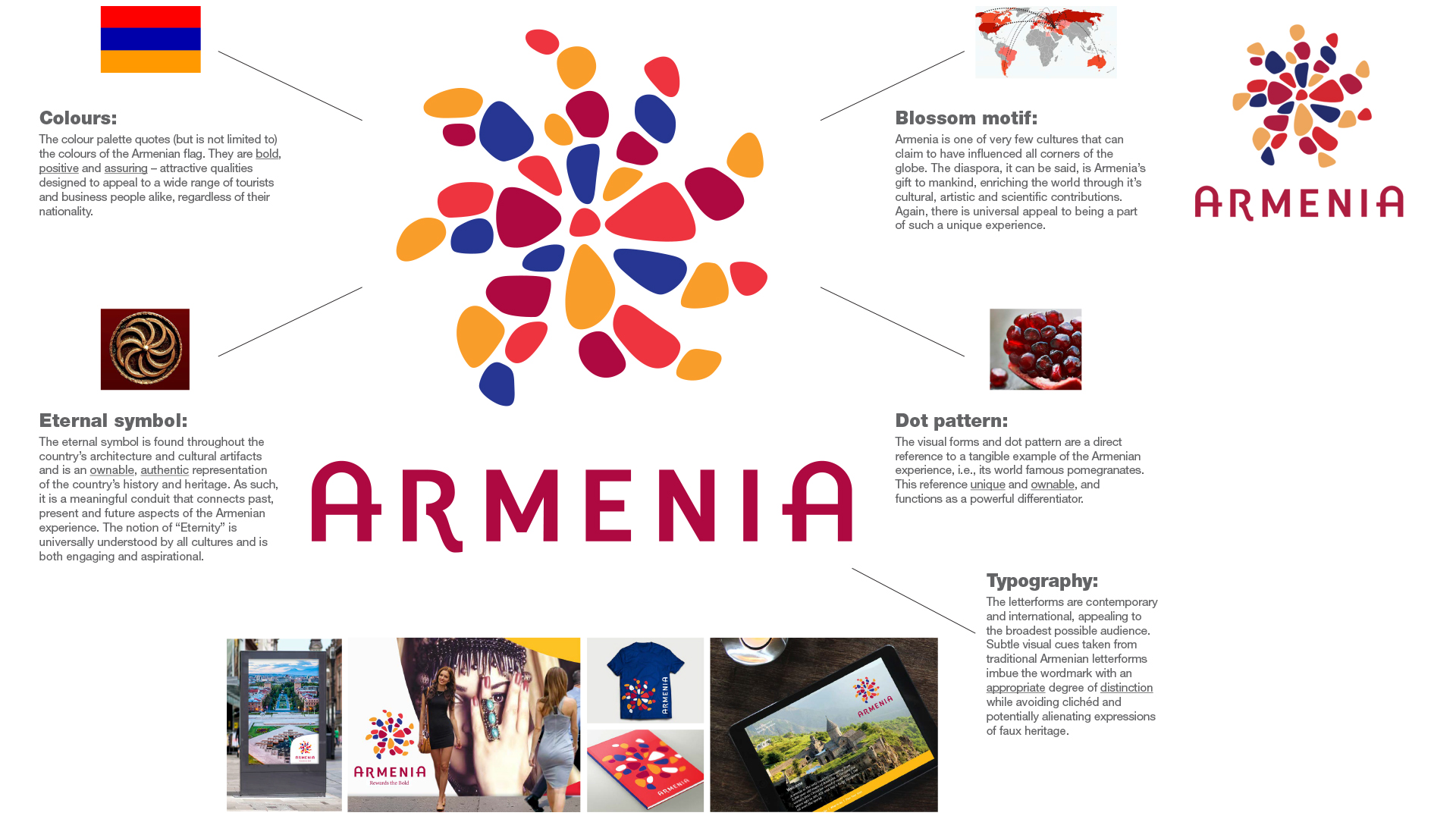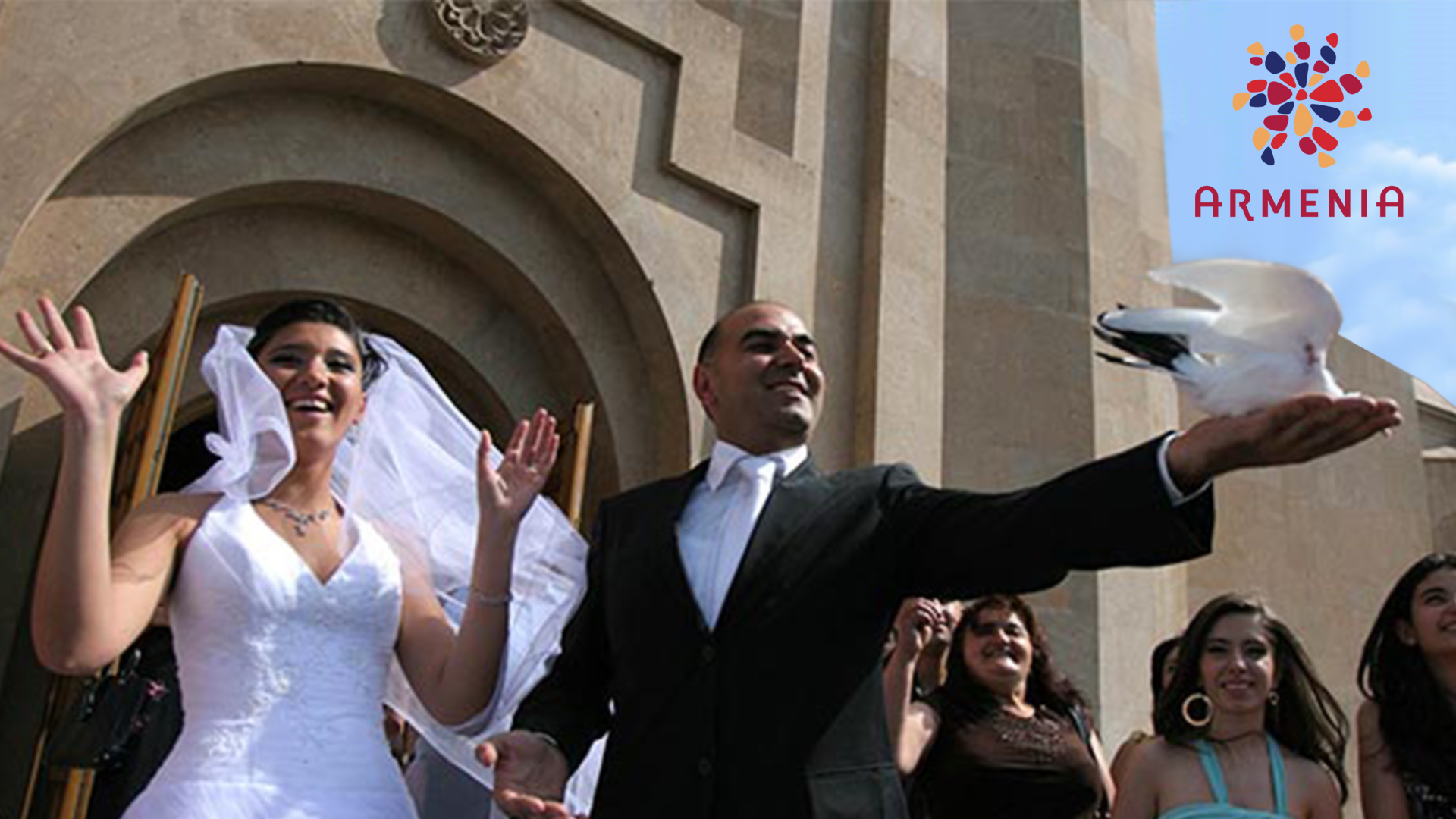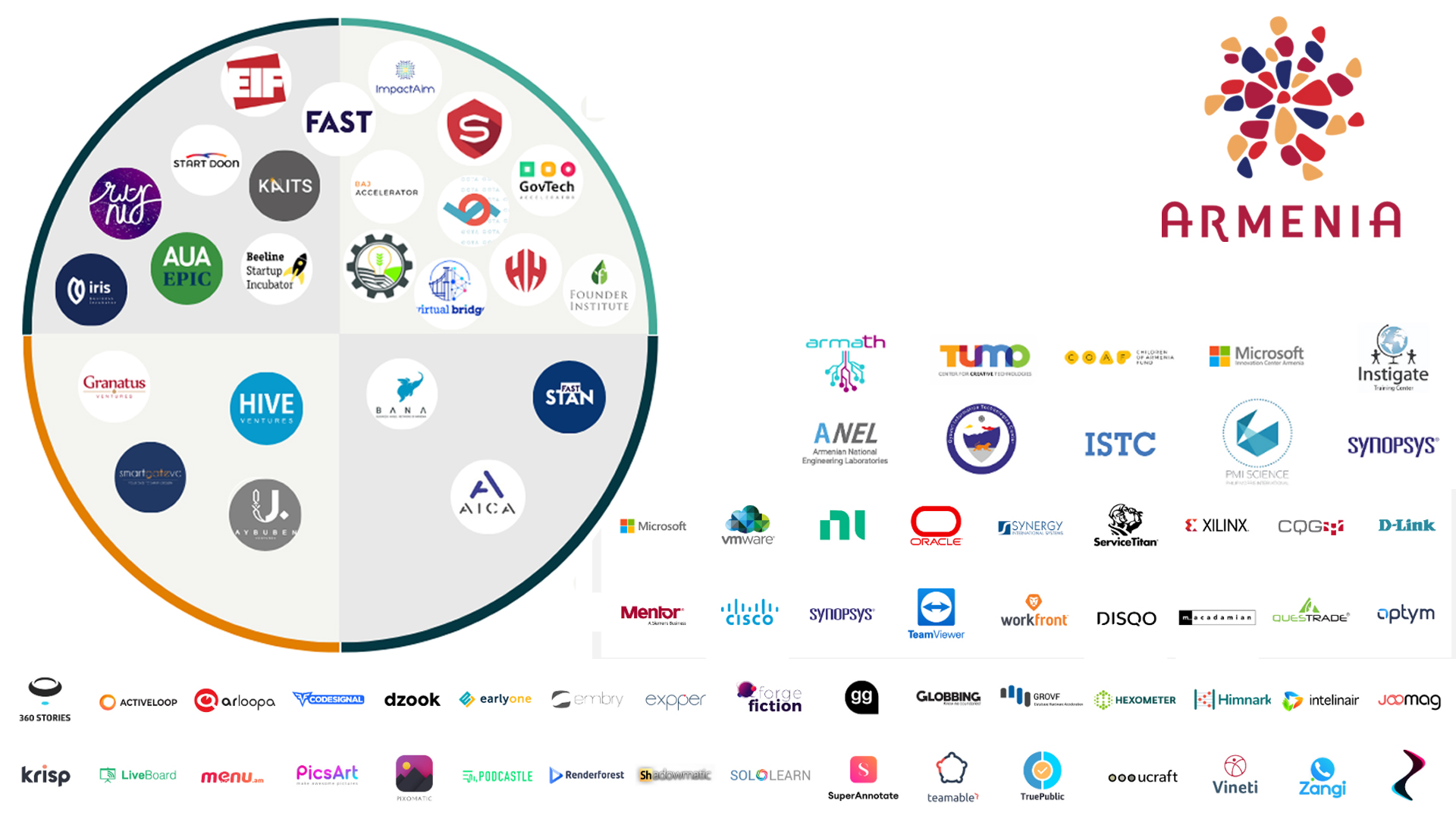Armenia’s Vision for the Future:
Becoming a Neutral Country that is a Knowledge and Innovation Gateway
Armenians embody a diverse mosaic of values, including strong family bonds, a deep-rooted pride in cultural heritage, unwavering resilience in adversity, a relentless pursuit of knowledge and education, and a tradition of warm hospitality and generosity. These values are the foundation of a cohesive and resilient community that cherishes its history, supports one another, embraces learning and innovation, and welcomes all with open arms. Together, these values define the essence of Armenian identity and drive a collective vision of cultural preservation, societal progress, and global unity.
What Does It Mean to Be Armenian?
Being Armenian encompasses a rich tapestry of cultural, historical, and social elements. It means being part of an ancient culture with a strong sense of identity and heritage, which includes:
- Cultural Identity: Embracing and celebrating unique traditions, customs, and values passed down through generations. This identity includes a deep appreciation for the Armenian language, music, dance, literature, art, cuisine, and folklore.
- Christian Heritage: Armenia was the first nation to adopt Christianity as its state religion in 301 AD. Being Armenian often involves a strong connection to the Armenian Apostolic Church, its teachings, and the preservation of religious practices and rituals.
- Historical Resilience: Armenians have a long history of overcoming challenges and adversity, being Armenian means recognizing and honoring the struggles and sacrifices of ancestors and the resilience that has preserved their culture and identity.
- Diaspora Connection: The Armenian Diaspora, consisting of Armenians living outside of Armenia, plays a significant role in Armenian identity. Being Armenian involves connecting with the global Armenian community, supporting each other, and preserving Armenian culture and heritage worldwide.
- National Pride: This instills a sense of pride in Armenia’s achievements, contributions, and cultural heritage, including historical landmarks, rich cultural traditions, and the accomplishments of Armenians in various fields.
- Unity and Solidarity: Armenians have a strong sense of unity and solidarity within Armenia and the global Armenian community. Being Armenian means supporting and standing together as a community, particularly in times of need or when advocating for Armenian causes.
Being Armenian encompasses a deep connection to Armenian culture, history, and traditions, as well as a shared sense of identity and pride.
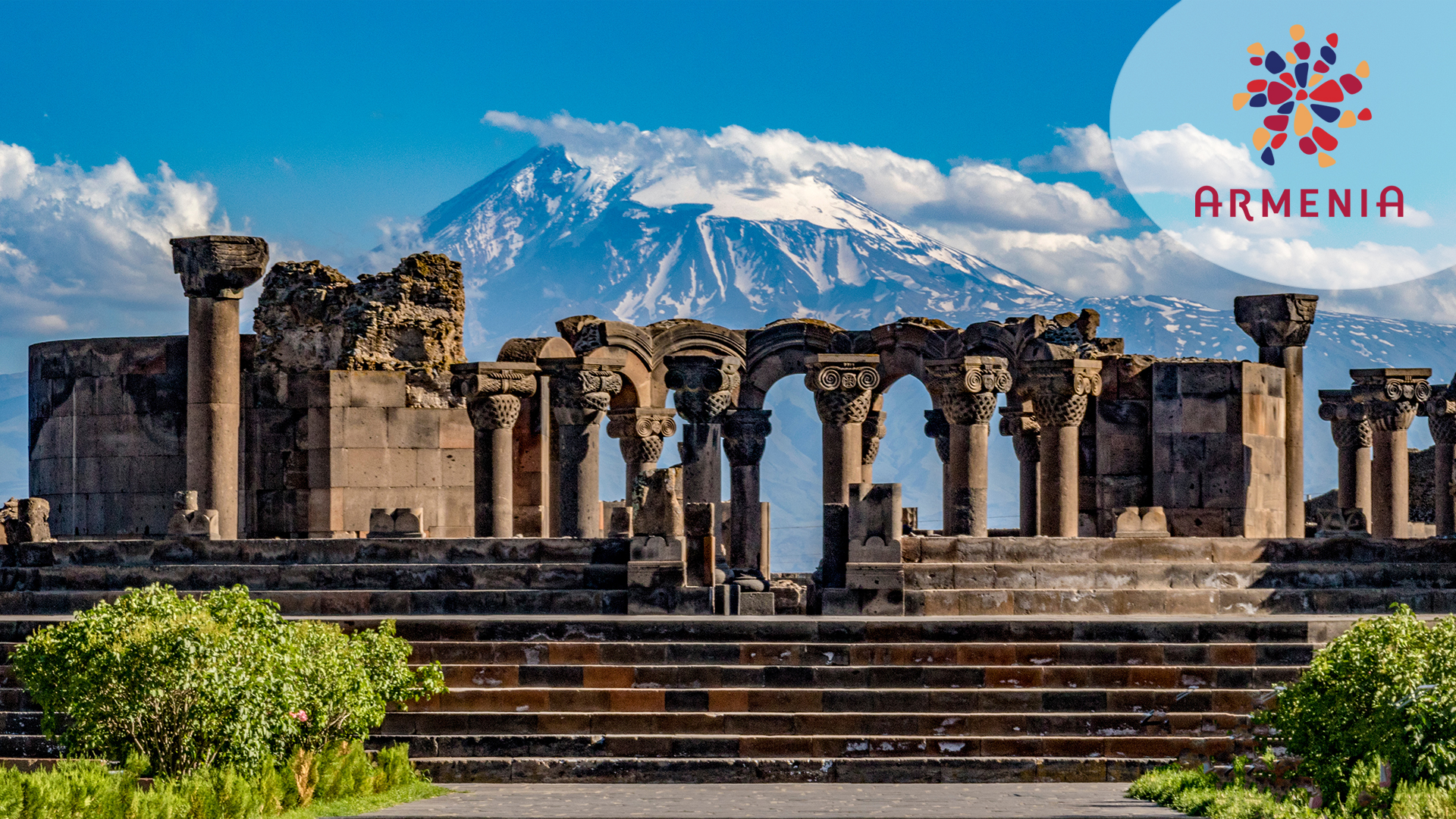
Cultural Identity:
Armenians take pride in their unique language, traditions, arts, and cuisine. The Armenian language, with its distinctive alphabet created by Mesrop Mashtots in the 5th century, is a crucial part of this identity. Armenia’s cultural heritage includes language, Christianity, architecture, music and dance, literature and art, cuisine, folklore, crafts, the Armenian alphabet, khachkar cross-stones, Armenian manuscripts, and the incorporation of chess into the school curriculum. This heritage reflects Armenia’s long history, deep-rooted traditions, and the resilience of its people.

Historical Background:
Armenia is on the oldest recorded map, the Sîna map, which dates from the 7th century BC. The map shows Armenia as a large, independent kingdom and is one of the earliest surviving maps of the region. The Sîna map is located in the British Museum in London, England. It was created in the 7th century BC, over 2,700 years ago.
Armenia is in the Old Testament as the land of Ararat, where Noah’s Ark came to rest after the flood. The name “Armenia” is derived from the Armenian word “Hayastan,” which means “land of the Armenians.”
The Old Testament is a collection of books from the 10th century BC to the 2nd century BC; the oldest books were written over 3,000 years ago, and the most recent parts were written over 2,000 years ago.
Armenia is one of the earliest Christian civilizations, having adopted Christianity as the state religion in 301 AD. This deep historical connection to Christianity continues to be a strong element of Armenian identity.
Armenia’s history is long and complex, divided into three main periods: pre-Christian, Christian, and modern.


Pre-Christian Period:
In fact, it is one of the oldest countries in the world. Scientific research, numerous archaeological findings, and old manuscripts prove that the Armenian Highlands are the Cradle of Civilization. Some of the world’s oldest things were found in Armenia. The Armenian Stonehenge, “Karahunj,” was founded over 7,500–15,000 years ago. Armenia was a major center of civilization in the ancient world. Armenians were among the first to adopt Christianity and played an important role in spreading the religion worldwide.
The ancient Armenian kingdom of Urartu is known for its cultural influence, art, and historical connections to modern-day Armenia. It had a great influence on various ancient civilizations.
Urartu had a profound cultural influence on its neighbors, and its art and production techniques are observed in neighboring regions, such as Etruscan burials and Scythian belts and scabbards. Armenian culture has remained unchanged over millennia, and various ancient civilizations have used various names to refer to Armenia.
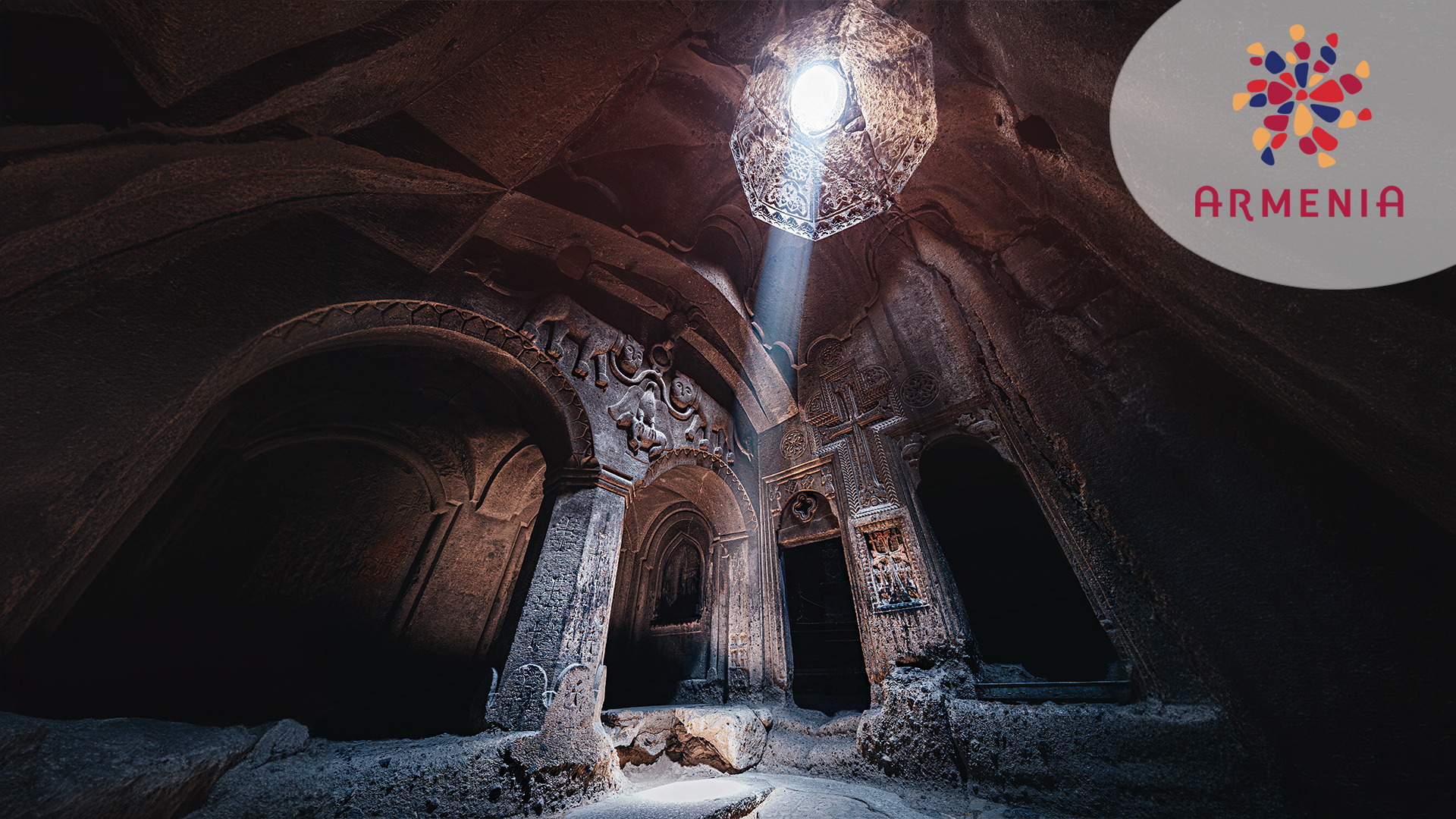

Christian Period:
Marked by the rise of the Armenian Apostolic Church, one of the oldest Christian churches. The Armenian Church significantly influenced Armenian culture and identity and remains a major force in Armenian society today.
Modern Period:
Marked by the Armenian Genocide, a significant atrocity of the 20th century. The genocide resulted in the deaths of an estimated 1.5 million Armenians and profoundly impacted Armenian history and culture.
Despite its challenges, Armenia as a nation has survived for over 3,000 years. It is a proud and resilient nation with a rich history and culture. Armenians have also been victims of other atrocities, including the Hamidian massacres of 1894–1896, the Ottoman Turkish Genocide of 1915, and the Sumgait pogrom of 1988. Ilham Aliyev, the leader of Azerbaijan, is accused of genocide and ethnic cleansing against Armenians: the state-sponsored hate towards Armenians in Azerbaijan through education, media, and initiatives has exacerbated animosity.
Despite their suffering, Armenians have not committed atrocities against their neighbors. They have a long history of tolerance and coexistence with other ethnic groups. For instance, the Armenian Apostolic Church has a history of welcoming people of all faiths and has promoted peace and reconciliation efforts.
Armenian resilience and determination have enabled them to advocate for justice and human rights and will continue to do so in the future.
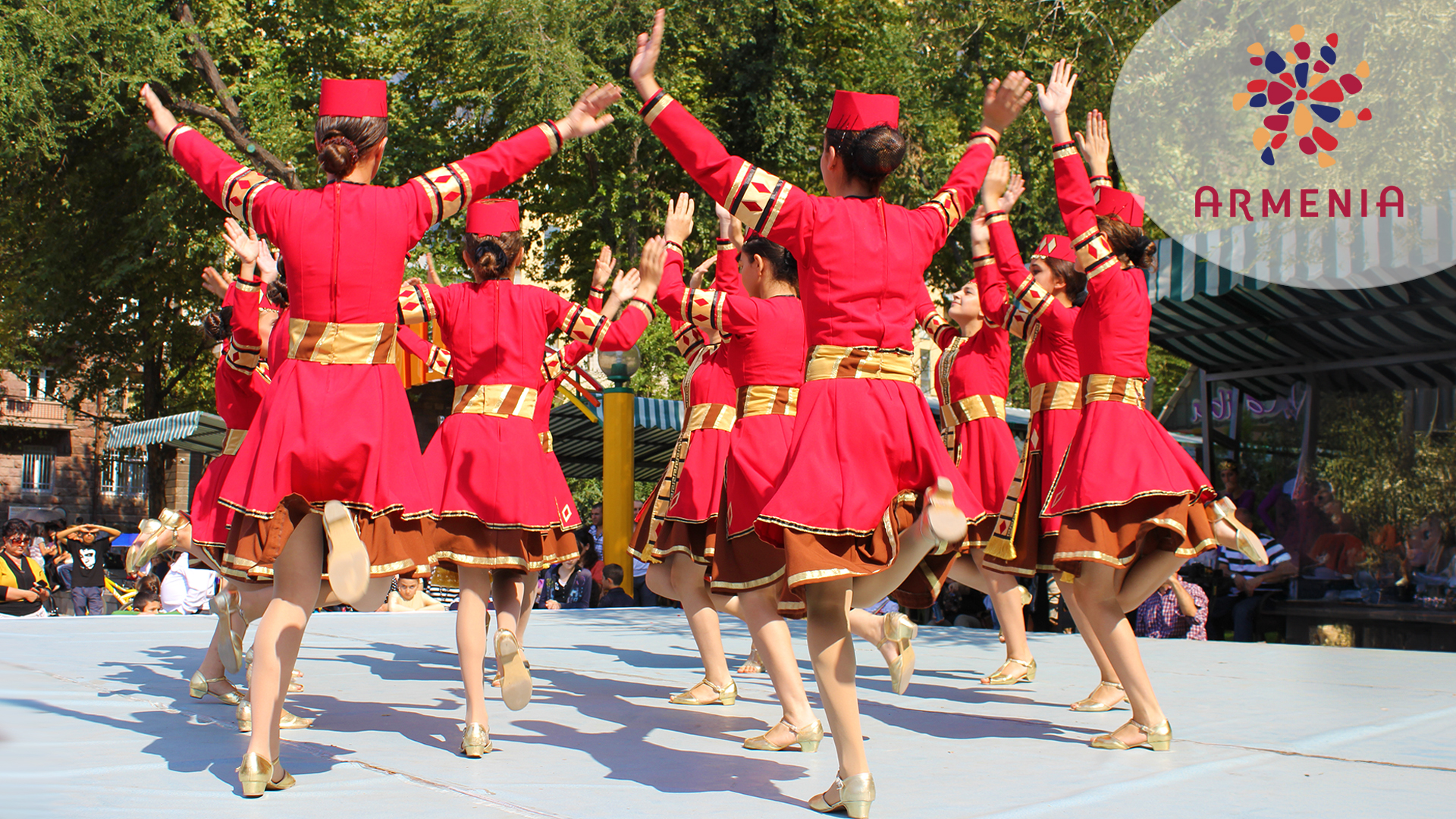
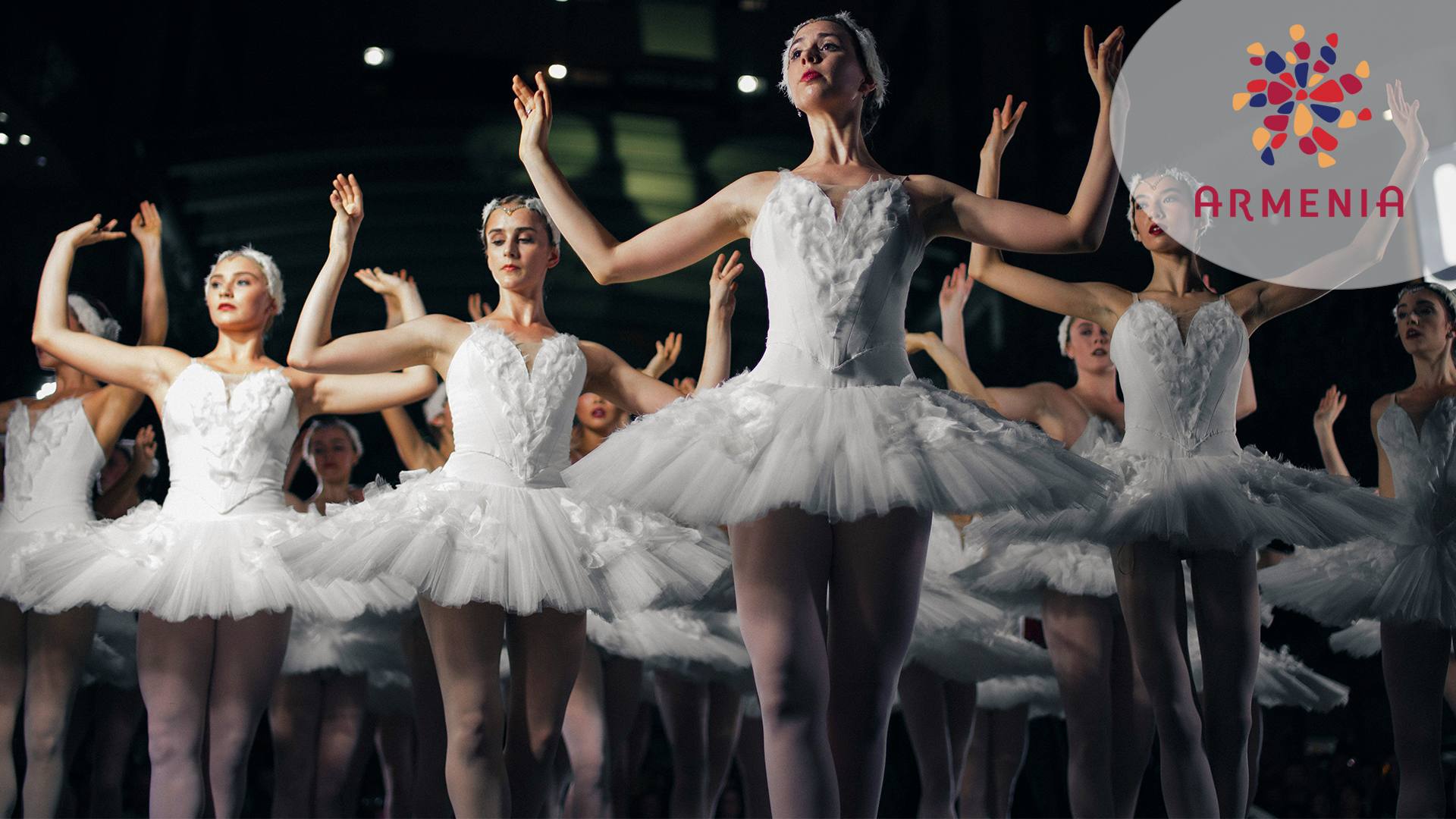
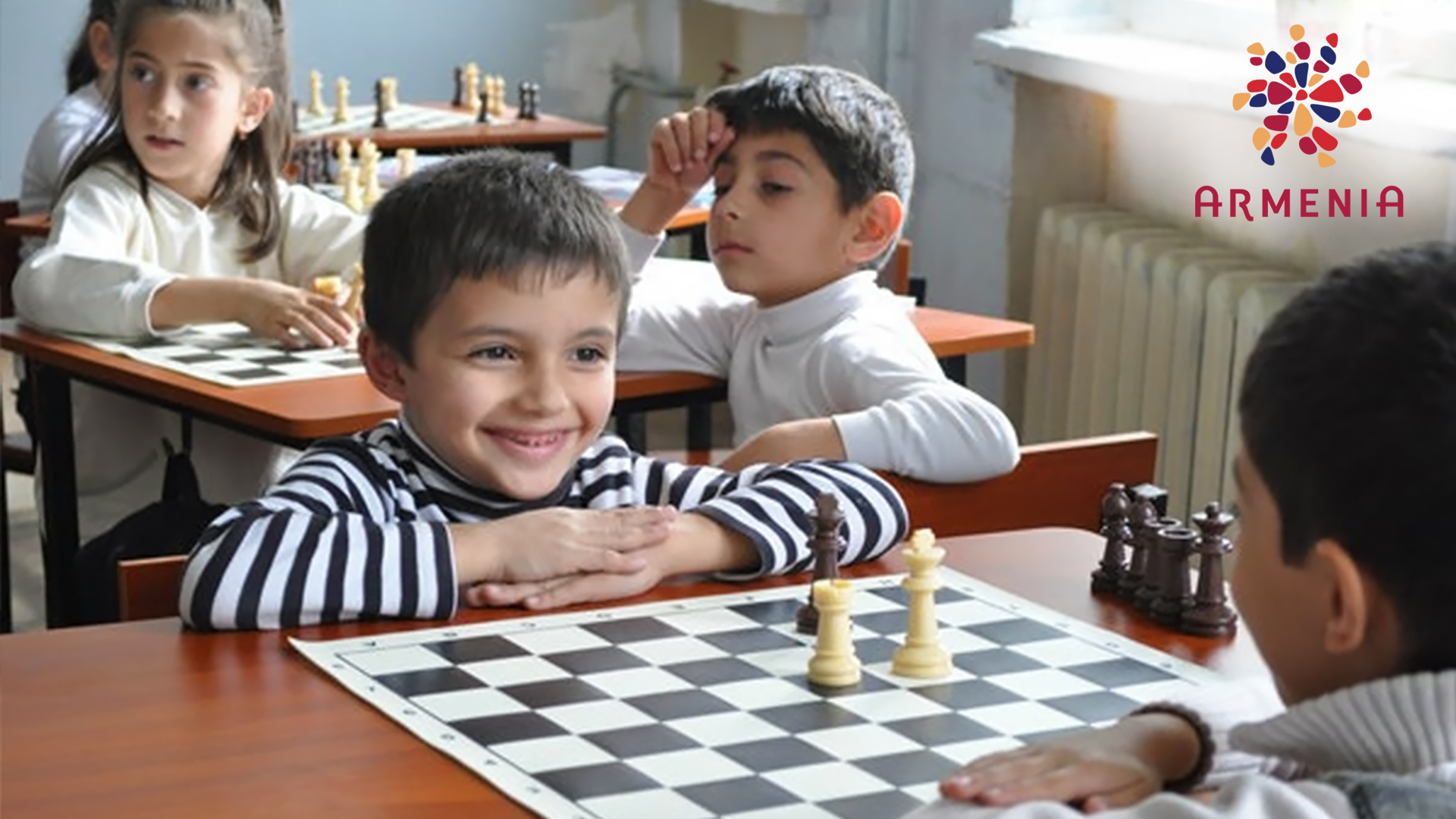

Diaspora and Homeland:
Despite being a small country in the South Caucasus, Armenia has a significant diaspora worldwide due to historical events, including the Armenian Genocide of 1915. Armenians maintain strong community ties and connections to their homeland.
The Armenian diaspora is a vibrant global community, with the largest communities in the United States, Russia, France, and Lebanon. Despite being scattered worldwide, the diaspora maintains strong community ties and connections to the homeland. The diaspora has been a major source of support for Armenia, playing a pivotal role in the country’s development.
The Armenian Diaspora is a unique and resilient community that overcame great challenges. It is a source of pride for Armenians worldwide and a testament to the strength of the Armenian people.
The relationship between the Armenian Diaspora and the homeland is characterized by a shared sense of identity, cultural preservation, economic support, advocacy, and emotional connection. The Diaspora plays a vital role in maintaining and strengthening Armenian heritage and contributing to the development of Armenia.
The diaspora, formed as a result of the Armenian Genocide in 1915, has been instrumental in preserving culture, language, and traditions and providing economic support through remittances, investments, and philanthropic initiatives. It has also been actively involved in advocating for the recognition of the Armenian Genocide and raising awareness about Armenian history and culture.
The emotional connection between the diaspora and the homeland is strong, with many individuals from the diaspora visiting Armenia regularly and contributing to its development. Additionally, there has been a trend of Armenians from the diaspora returning to Armenia, bringing valuable skills and experiences.
The Armenian diaspora is a valuable asset to Armenia and a key player in the country’s future.

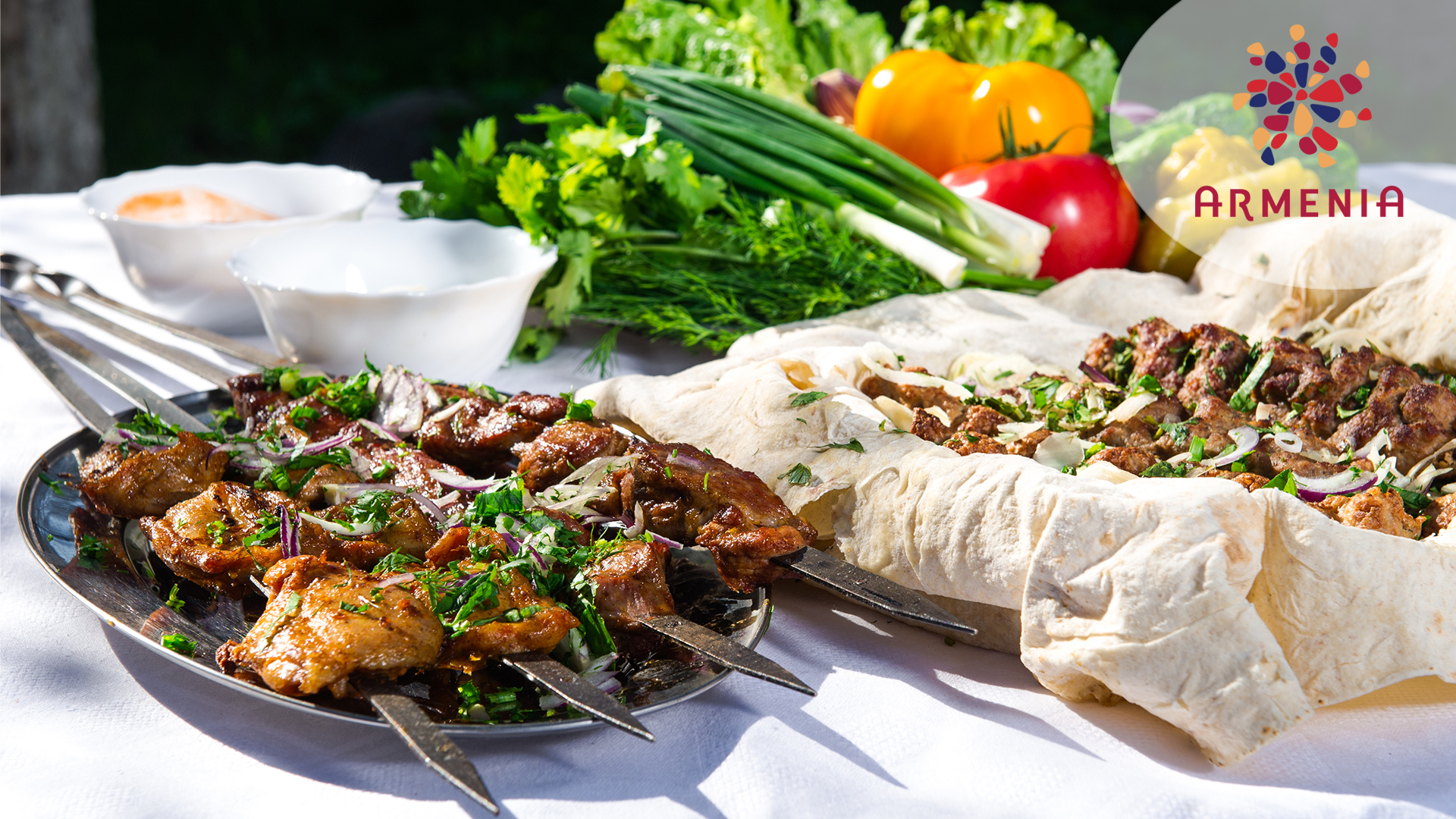
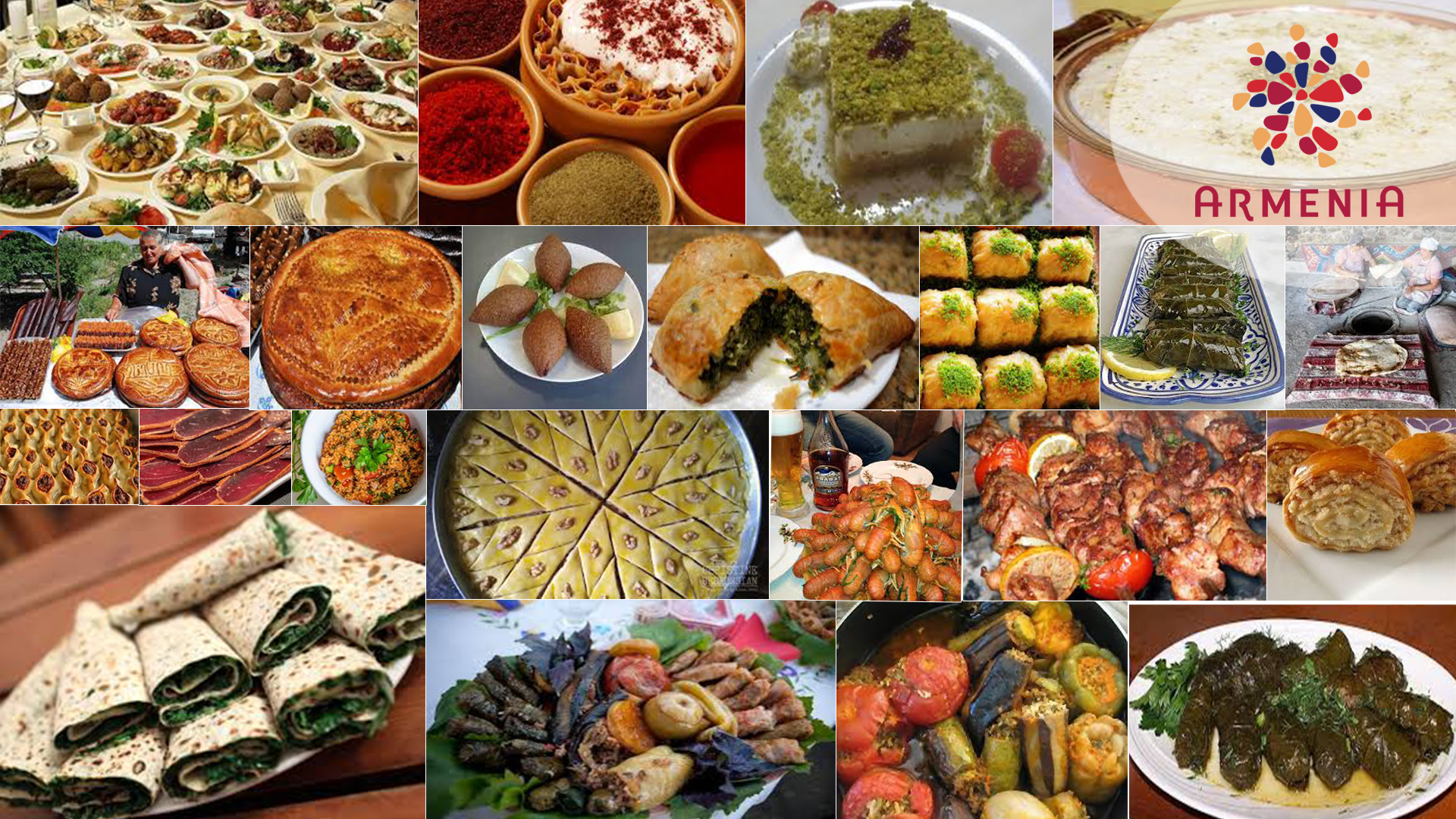
Armenian Cuisine:
Armenian cuisine is rich and diverse, influenced by the many cultures that have come into contact with Armenia over the centuries. It characteristically uses fresh, seasonal ingredients and emphasizes meat, vegetables, and bread.
Some of the most famous Armenian dishes include dolma, khorovats, and lavash. Dolma is a stuffed vegetable typically made with grape leaves, rice, and meat. Khorovats is a traditional Armenian barbecue made with skewered meat, vegetables, and fruit. Lavash is a thin flatbread often used as a wrap for sandwiches or a side dish.
Armenian cuisine has also influenced Turkish cuisine, particularly meat dishes and bread. Many Turkish dishes, such as kebabs and pide, are based on Armenian recipes. Lavash is also a popular bread in Turkey, often used to make sandwiches or wraps.
Armenian cuisine is delicious and flavorful and sure to please everyone. If you are ever in Armenia, be sure to try some of the local dishes. You will not be disappointed!

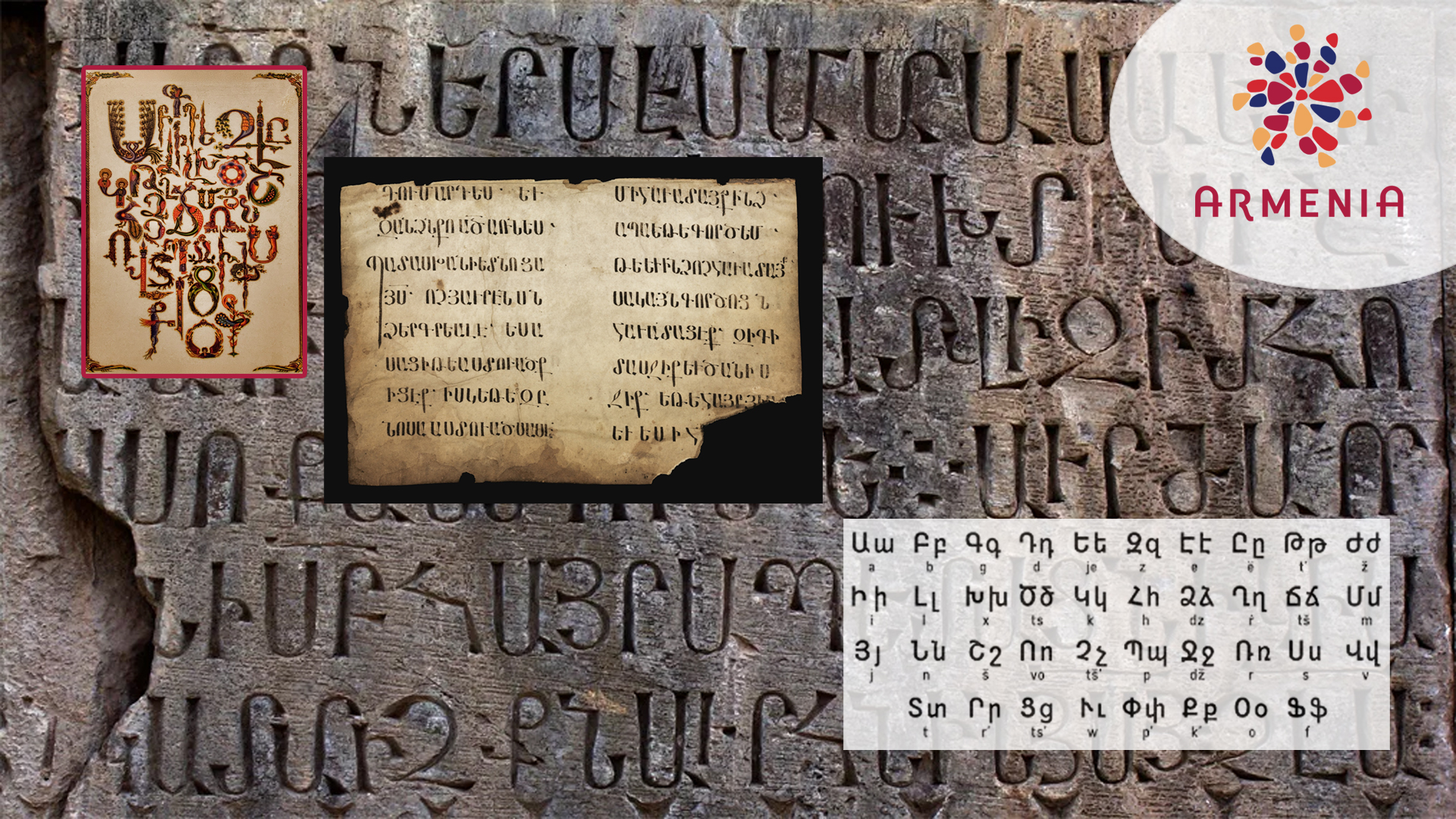
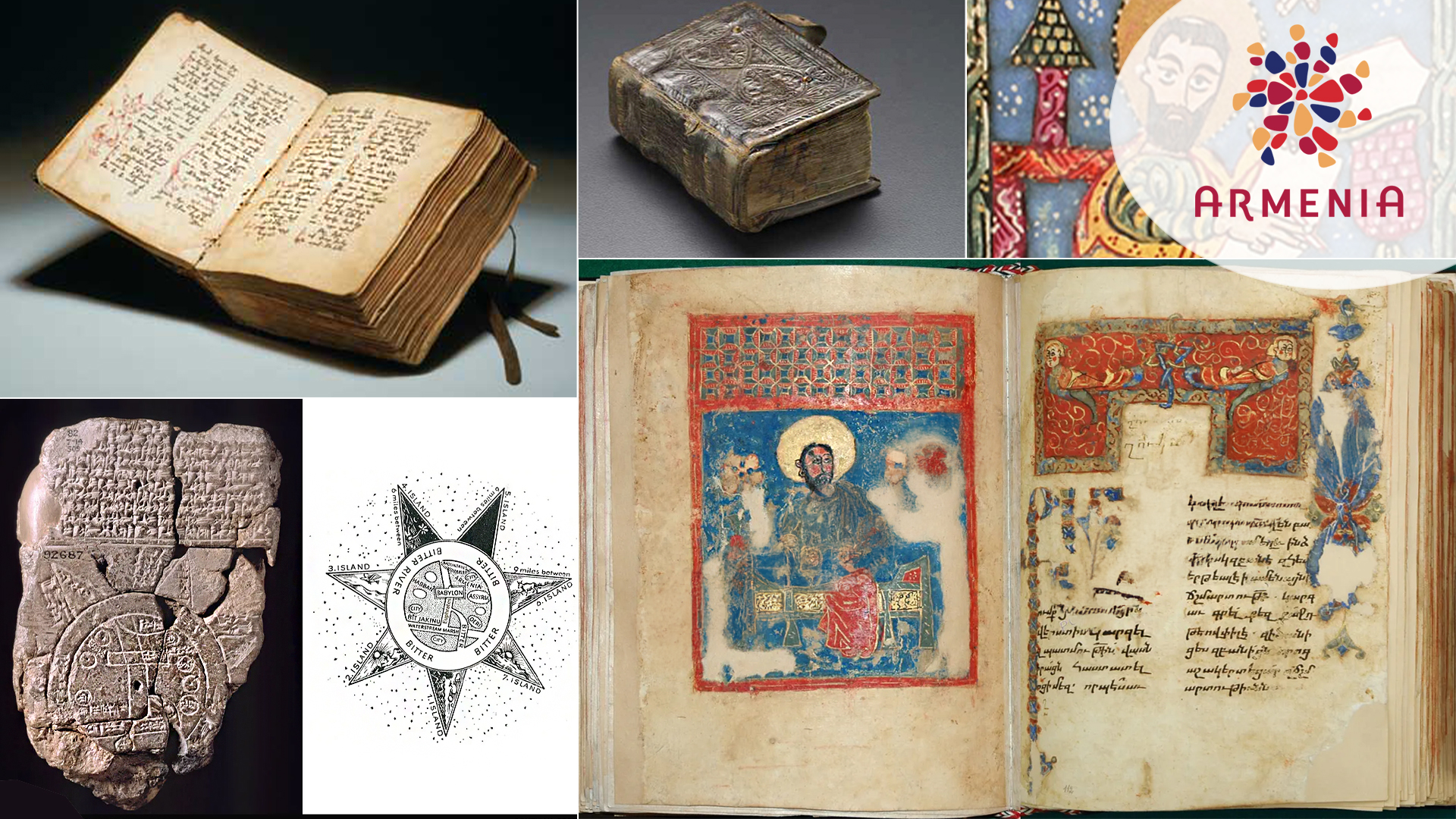 Armenian has a long literary history, starting with its oldest surviving 5th-century Bible translation. Influenced by Western Middle Iranian languages like Parthian and enriched by Greek, Persian, and Syriac loanwords, Armenian evolved into two modern literary forms: Eastern Armenian (mainly spoken in Armenia) and Western Armenian (now mostly spoken in the diaspora). The oldest Armenian writings, known as Mehenagir, were inscribed on temples. The Armenian alphabet, created by Mesrop Mashtots in 405, originally had 36 letters and remains a cornerstone of Armenian culture today. Photo Credit: Freepik AI. armgeo.amarmgeo.am
Armenian has a long literary history, starting with its oldest surviving 5th-century Bible translation. Influenced by Western Middle Iranian languages like Parthian and enriched by Greek, Persian, and Syriac loanwords, Armenian evolved into two modern literary forms: Eastern Armenian (mainly spoken in Armenia) and Western Armenian (now mostly spoken in the diaspora). The oldest Armenian writings, known as Mehenagir, were inscribed on temples. The Armenian alphabet, created by Mesrop Mashtots in 405, originally had 36 letters and remains a cornerstone of Armenian culture today. Photo Credit: Freepik AI. armgeo.amarmgeo.am 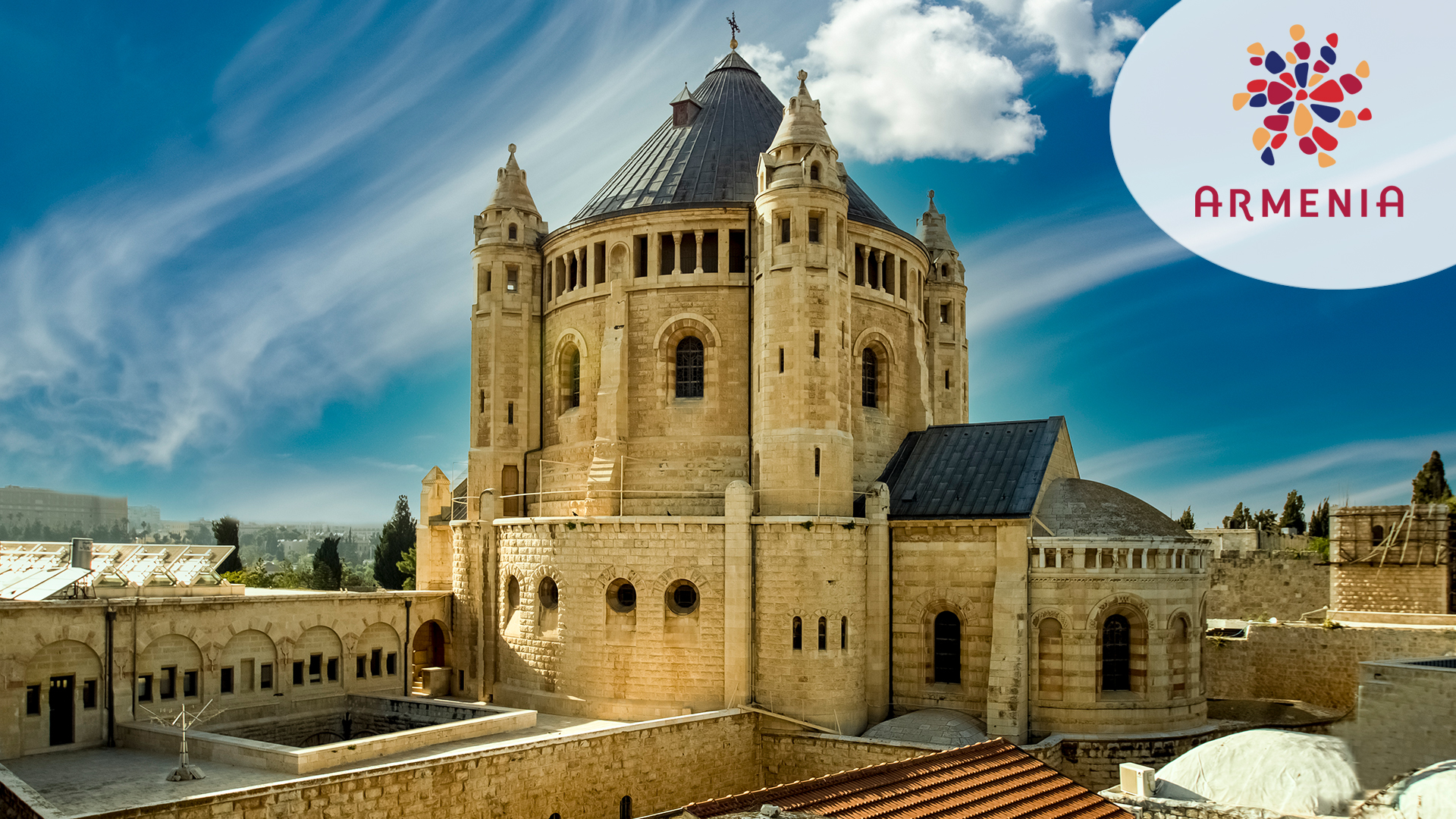
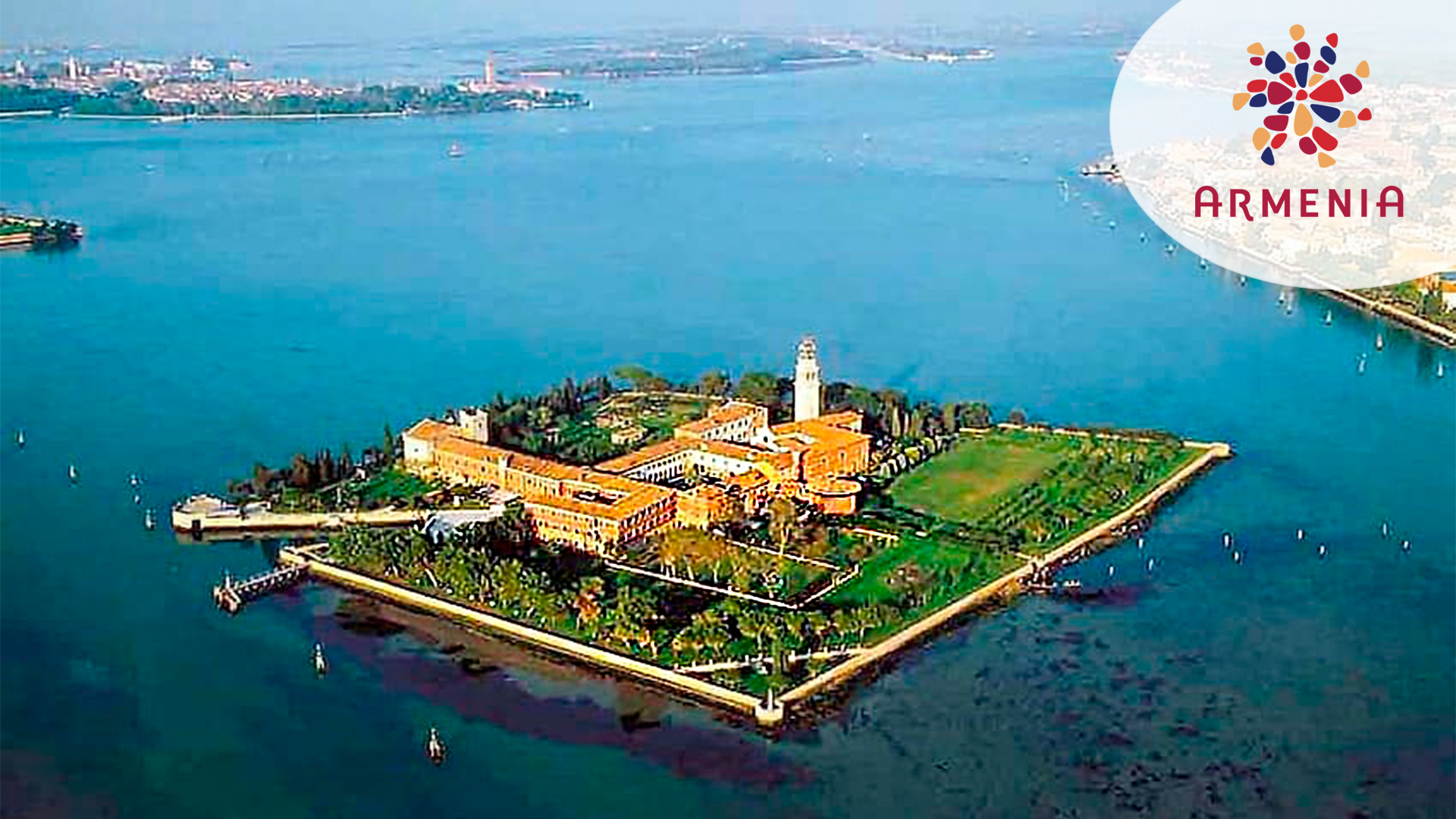
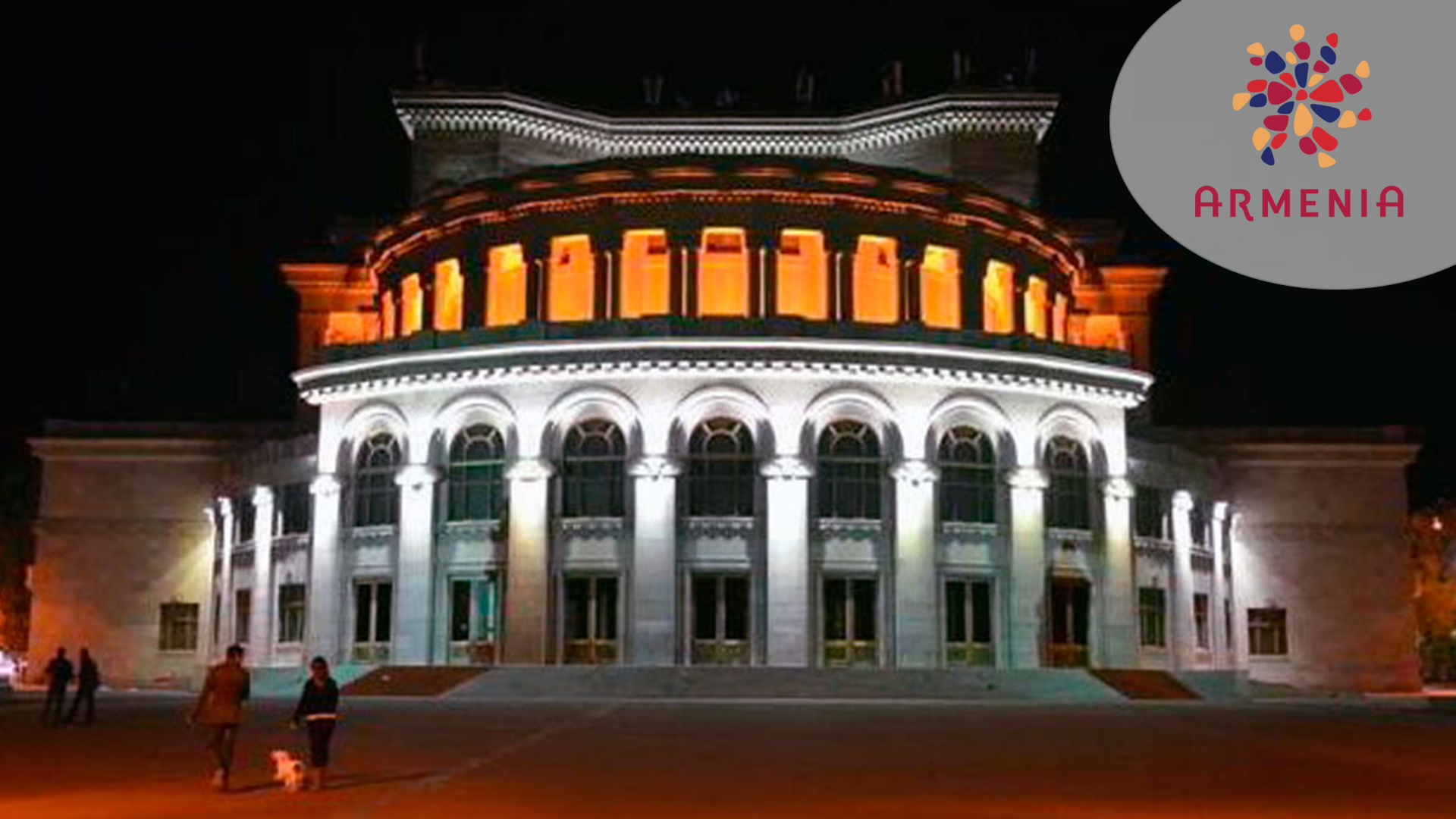


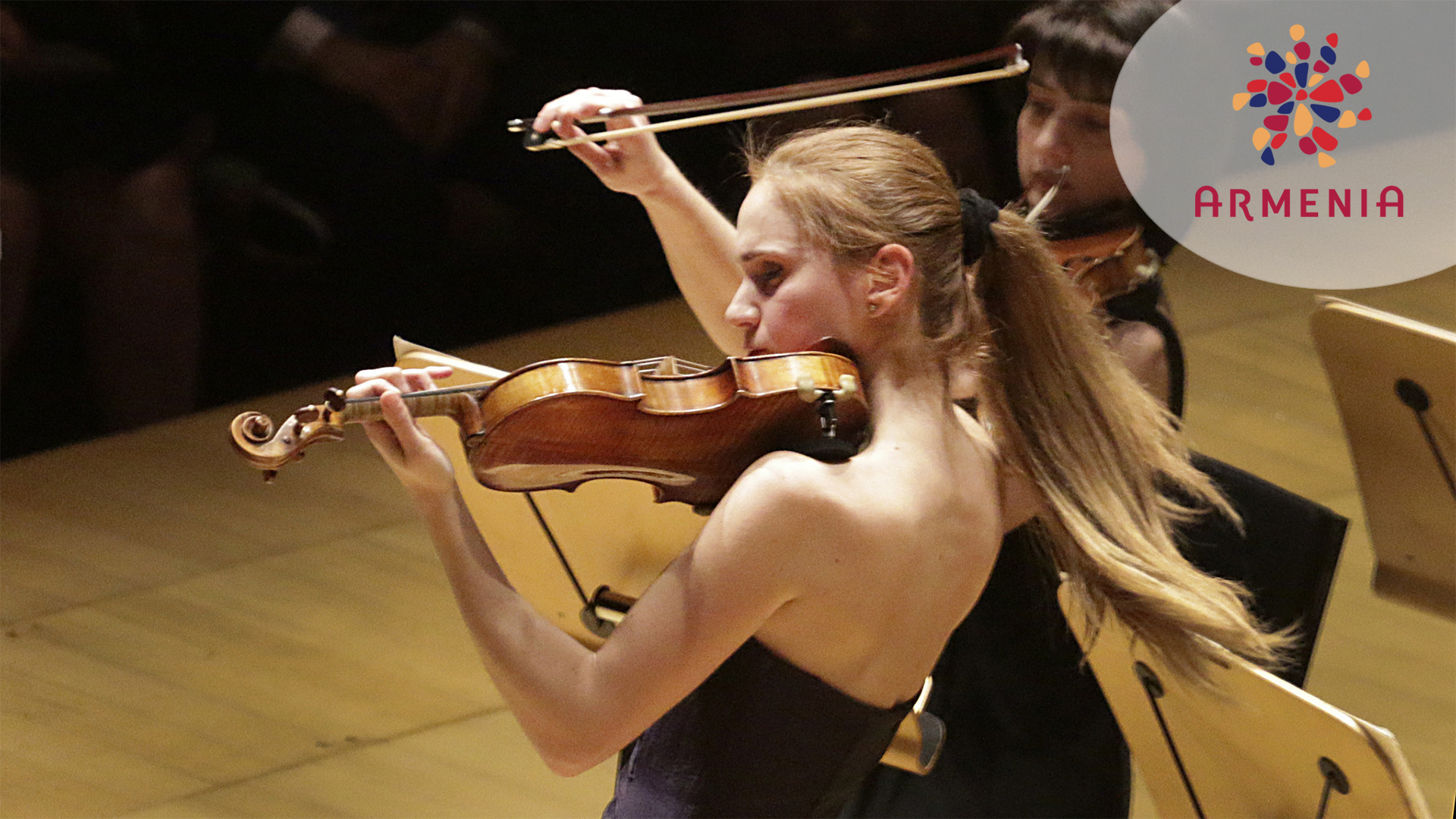
Armenian Arts and Literature:
Armenians have made significant contributions to arts and literature, a testament to their rich cultural heritage. Armenian arts and literature have a rich and vibrant history that spans centuries. They are integral to Armenian culture and have significantly preserved and expressed Armenian identity.
The Armenian alphabet, created by Mesrop Mashtots in 405 AD, played a crucial role in developing Armenian literature and preserving Armenian culture. Armenian literature encompasses various genres, including poetry, prose, drama, and historical writings. Notable Armenian writers and poets include Movses Khorenatsi, Narekatsi, Hovhannes Shiraz, Paruyr Sevak, and Silva Kaputikyan. Armenian literature often reflects themes of love, nature, spirituality, and the Armenian historical experience.
Armenian folklore and oral tradition have been passed down through generations, preserving myths, legends, and folk tales. These stories often convey moral lessons, cultural values, and historical events.
Armenian visual arts include painting, sculpture, ceramics, jewelry, and architecture. Armenian illuminated manuscripts, known as “khachkars,” are renowned for their intricate designs and religious symbolism. Armenian architecture is characterized by unique churches, monasteries, and historical buildings, showcasing a blend of Byzantine, Persian, and Armenian architectural styles.
Armenian art and literature continue to evolve and thrive in contemporary times. Armenian artists, writers, and musicians explore various themes and experiment with different artistic styles, reflecting the changing social, political, and cultural landscape.
Armenian art and literature have served as a means of cultural expression and played a crucial role in preserving Armenian identity, history, and heritage throughout the centuries. They are a testament to the resilience and creativity of the Armenian people.
Armenian Music and Dance:
Armenian music and dance are integral parts of Armenian cultural expression. Traditional Armenian music is characterized by its distinct melodies, rich harmonies, and emotional depth. The duduk, a traditional Armenian woodwind instrument, holds a special place in Armenian music. Armenian dance forms, such as the Kochari and Shourch Bar, are energetic and often performed in traditional costumes.
The contributions of Armenians to music, liturgy, science, and innovations:
Music and Dance: Ancient Armenians had a rich musical tradition, with distinct melodies and rich harmonies. The duduk, a traditional Armenian woodwind instrument, is noteworthy for its haunting sound and emotional depth. Armenian dance forms like Kochari and Shourch Bar are energetic expressions of cultural identity often performed in traditional attire.
Liturgy: Armenians have a long history of religious music and liturgical chant. The Armenian Apostolic Church has a strong musical tradition, incorporating hymns and chants in their worship services. Ancient Armenian hymns and spiritual songs are integral to Armenian liturgical practices.
Science and Innovations: Ancient Armenians made contributions to various fields of science and technology. They excelled in fields such as astronomy, mathematics, and medicine. Notable Armenian scholars and innovators from antiquity made advancements in philosophy, natural sciences, and architecture, contributing to the overall knowledge and progress of the era.
Innovations: Armenians were known for their innovations in various fields. From architectural marvels like churches and monasteries to advancements in crafts like ceramics and metalwork, ancient Armenians displayed creativity and skill in their innovative endeavors. Their craftsmanship and inventions left a lasting impact on the region’s cultural and technological landscape.
The diverse and multifaceted contributions of ancient Armenians to music, liturgy, science, and innovation highlight their rich cultural heritage and intellectual prowess.
Resilience and Pride of the Armenian People:
Resilience, the ability to withstand and recover from adversity, is a defining characteristic of the Armenian people. This essential quality stems from various sources, including deep values, faith, spirituality, knowledge, and family, all of which contribute to success and perseverance in life.
Armenian people share deep values and firmly held beliefs, guiding their actions and providing a sense of purpose and direction, helping Armenians navigate difficult times. Armenians share deep faith, the belief in something greater than oneself, and offer hope and strength during challenging moments.
Spirituality, a sense of connection to something larger, enables Armenians to find meaning in life and cope with hardships. Knowledge, highly valued in Armenian culture through education and wisdom, facilitates better decision-making and problem-solving. Family, characterized by close-knit relationships and mutual care, provides critical support and encouragement during crises.
Resilience is a quality that Armenians have developed and strengthened over centuries. Here are some essential traits that Armenians foster collectively:
- Identify and hold steadfast to Armenian values and beliefs.
- Armenians have developed a strong sense of purpose.
- Armenians practice positive thinking and hope for the future.
- Through tight-knit families and family support units, Armenians take care of their physical and mental health.
- Armenians are knowledge seekers, builders, creators, learners, and inventors and surround themselves with positive influences.
- Armenians are spread throughout the earth. Wherever they are, they have churches, communities, and businesses and support each other when needed.
With hard work and dedication, Armenians have cultivated the resilience necessary for success in life.
The Armenian people’s ability to survive and thrive despite numerous challenges and hardships throughout history is a testament to their resilience. Armenians have faced and overcome foreign conquests, genocide, and displacement from their homeland, continually rebuilding and emerging stronger.
Several factors contribute to this extraordinary resilience. One significant factor is the strong sense of community among Armenians. Renowned for their hospitality and willingness to help each other in times of need, this community spirit has played a crucial role in their survival and prosperity.
Another contributing factor is their strong sense of identity. Armenians take immense pride in their history and culture and are determined to preserve their identity despite assimilation pressures. This unwavering sense of identity has helped them maintain their cultural and traditional values amidst persecution.
The enduring resilience of the Armenian people is a powerful testament to their strength and determination. Their ability to overcome adversity and maintain their cultural identity is a shining example of the power of resilience and the indomitable human spirit. The Armenian people’s resilience ensures they will continue to thrive, no matter their challenges.
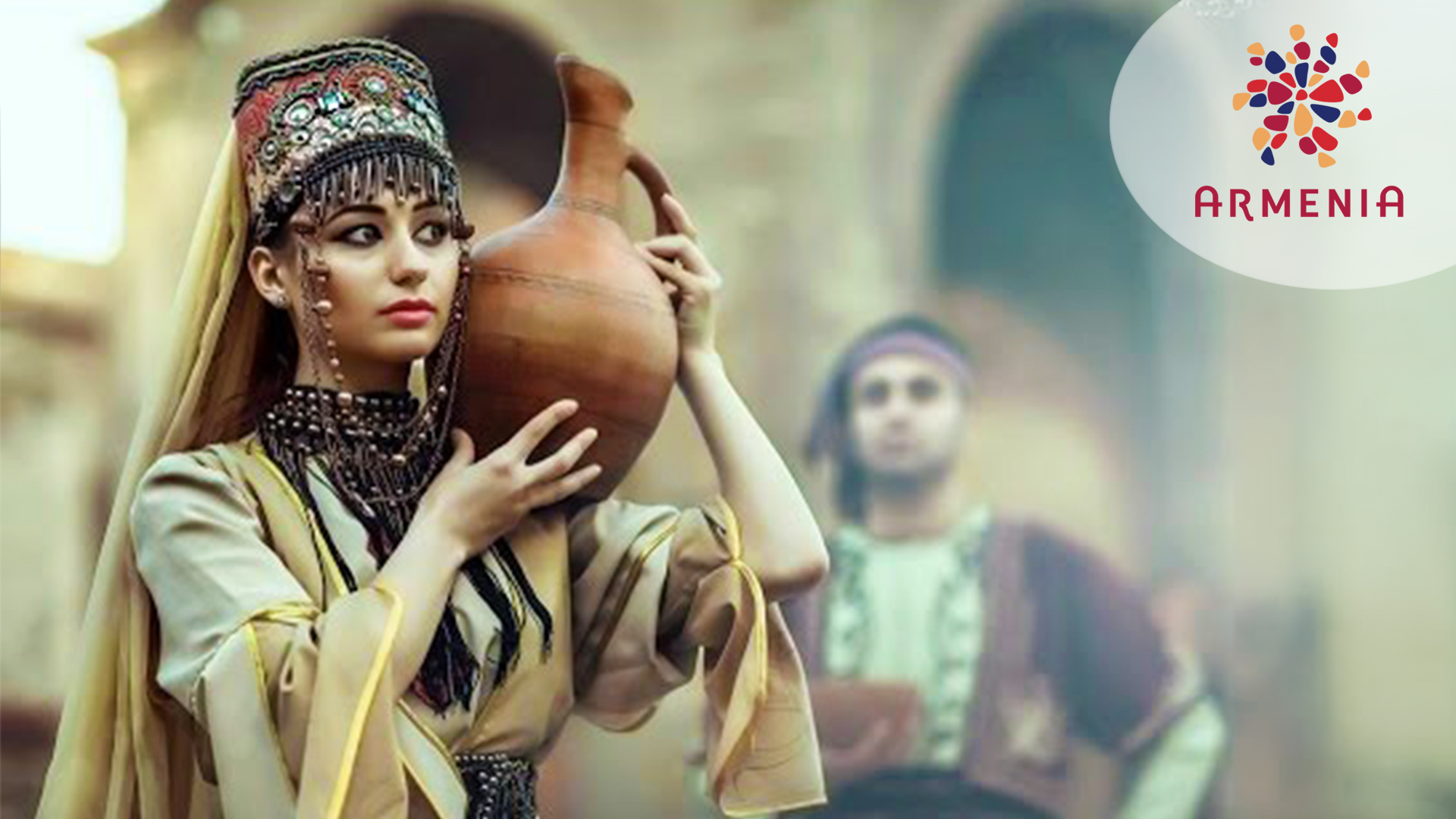
Spirituality and Religion:
The first Christians to live on the banks of the Arno came from the East, including two pivotal figures in the early history of the Church in Florence: Minas, “King of the Armenians,” martyred in Florence during Emperor Decius’s persecutions in 250 AD.
Many other Armenian saints traveled to major cities around the world to spread Christ’s teachings. The Armenian Apostolic Church is seen by many as the custodian of Armenian national identity. Beyond its role as a religious institution, the Apostolic Church has traditionally been viewed as the foundational core in developing the Armenian national identity as God’s uniquely chosen people. According to a 2018 survey by the Pew Research Center, 82% of respondents in Armenia say it is very or somewhat important to be a Christian to be truly Armenian, and 79% of people in Armenia expressed trust in the Armenian Apostolic Church.
As both Eastern and Western Armenia came under Persian and Ottoman rule, the Armenian Apostolic Church became the center of many Armenian liberation activities. One of the oldest Christian denominations, it plays a significant role in the lives of Armenians by providing spiritual guidance, faith, and community while helping to preserve Armenian culture and identity.
The Armenian Apostolic Church was founded in the 4th century by St. Gregory the Illuminator, a Roman citizen born in Cappadocia, now modern-day Turkey. Converted to Christianity by St. Illuminator, he later became the first bishop of Armenia. Under his leadership, the Armenian Apostolic Church became the official religion of Armenia, contributing significantly to the development of Armenian culture and identity and aiding in preserving the Armenian language and literature.
During times of persecution, the Armenian Apostolic Church has been a beacon of strength and resilience for Armenians. In the 19th century, the church faced persecution by the Ottoman Empire. During the Armenian Genocide of 1915, carried out by the Ottoman Turks, the church provided spiritual guidance and support to Armenians.
Today, the Armenian Apostolic Church continues to play a crucial role in the lives of Armenians by offering spiritual guidance, faith, and community support. It remains instrumental in preserving Armenian culture and identity.

Examples of the church’s impact include:
- Spiritual Guidance: The church has helped Armenians find meaning in life, cope with difficult times, and connect with God.
- Faith: It has enabled Armenians to believe in a higher power and maintain hope for the future.
- Community: The church has provided a place for Armenians to come together and support each other.
- Cultural Identity: The church has helped preserve the Armenian language, traditions, and way of life.
For over 1,700 years, the Armenian Apostolic Church has been a vital force, providing spiritual guidance, faith, community, and cultural preservation to Armenians, underscoring its profound significance in Armenian life and history.
Armenian Family and Community: Pillars of Strength and Unity
Strong family ties and a deep sense of community are central to Armenian life. These values are woven into the very fabric of Armenian society, providing a foundation of support, unity, and cultural continuity. The importance of family and community is reinforced through various social gatherings and support networks that Armenians hold dear.
Family Dynamics
In Armenian culture, the family is considered the cornerstone of society. Traditional extended family structures often include parents, children, grandparents, aunts, uncles, and cousins. This broader family network plays a crucial role in daily life, offering emotional, financial, and moral support.
Respect for Elders:
One of the most notable aspects of Armenian family life is the deep respect for elders. Older family members are often regarded as the keepers of wisdom and tradition. Decisions, especially those concerning the family, are made with the input and blessing of elders, maintaining a sense of continuity and respect across generations.
Roles and Responsibilities:
Family roles and responsibilities are clearly defined, with each member contributing to the well-being of the household. Parents are seen as the primary caretakers and providers, while children are expected to honor their parents and take responsibility for family matters as they grow older.
Community Ties:
The Armenian sense of community extends beyond immediate family to encompass neighbors, friends, and fellow Armenians. This strong communal bond is evident in the numerous social gatherings, cultural events, and communal activities that Armenians participate in.
Social Gatherings:
Festivals and Holidays: Religious and national holidays, such as Vardavar, Easter, and Armenian Independence Day, are celebrated enthusiastically. These events provide opportunities for families and communities to unite, reinforcing social bonds and shared cultural identity.
Weddings and Birthdays: Significant life events such as weddings and birthdays are celebrated with large gatherings of family and friends. These occasions often involve traditional music, dance, and food, serving as important rituals that maintain cultural heritage.
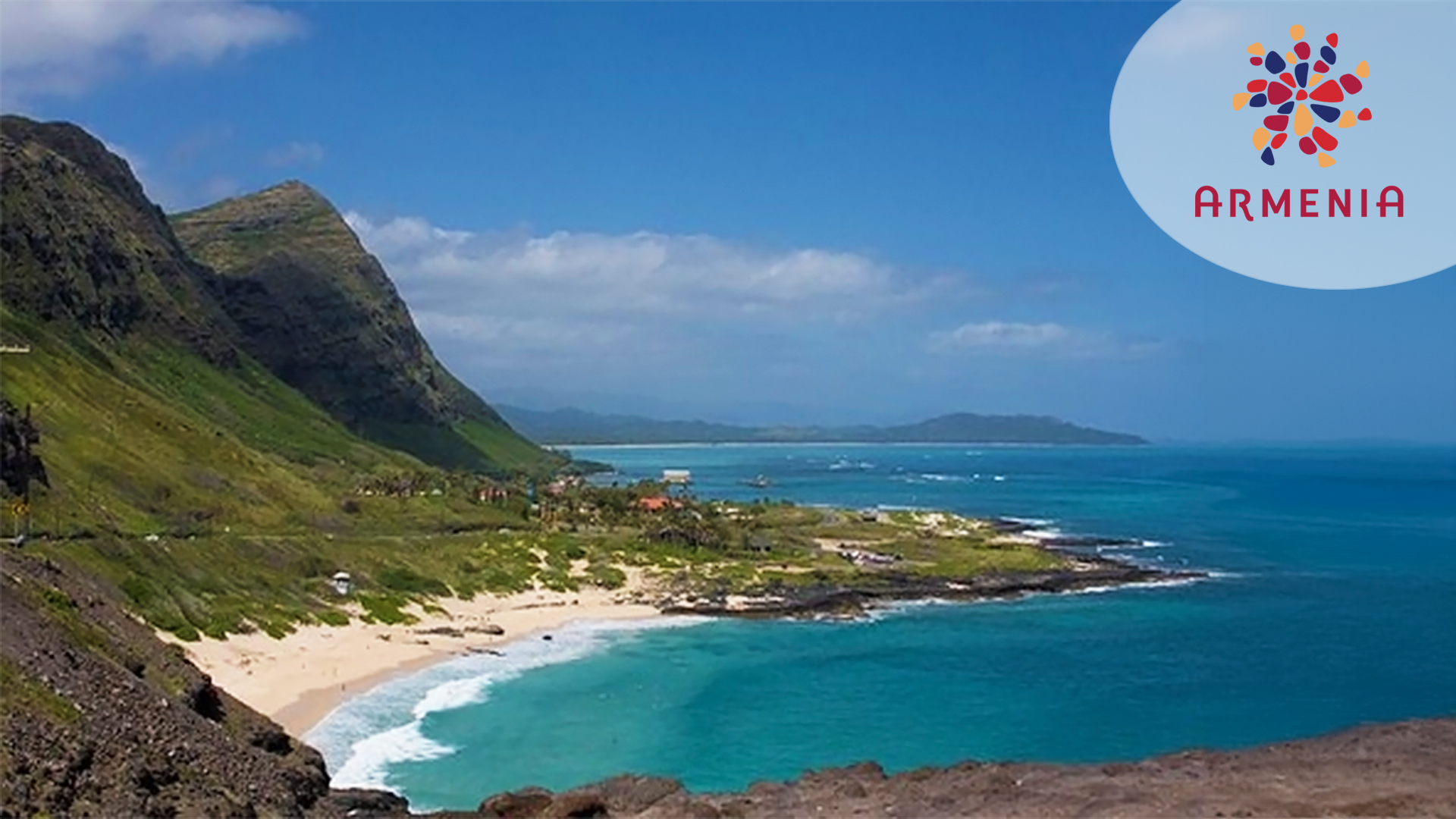 Lake Sevan is a large, high-altitude lake in eastern Armenia. It’s known for its beaches. Set on a narrow peninsula, the Sevanavank Monastery has 2 stone churches dating to the 9th century. To the south, Hayravank Monastery overlooks the lake from a rocky outcrop. Noratus Cemetery has hundreds of carved stone khachkar memorials. Odzaberd is a ruined fortress built by the Urartian civilization in the 8th century BC. Photo Credit: Freepik.v
Lake Sevan is a large, high-altitude lake in eastern Armenia. It’s known for its beaches. Set on a narrow peninsula, the Sevanavank Monastery has 2 stone churches dating to the 9th century. To the south, Hayravank Monastery overlooks the lake from a rocky outcrop. Noratus Cemetery has hundreds of carved stone khachkar memorials. Odzaberd is a ruined fortress built by the Urartian civilization in the 8th century BC. Photo Credit: Freepik.vSupport Networks:
Community Centers:
Armenian community centers and churches serve as social interaction and support hubs. They offer various programs and activities, from cultural classes to social services, helping to strengthen community ties and help those in need.
Charity and Philanthropy: Armenians have a strong tradition of charity and philanthropy. Many Armenian families and organizations are involved in charitable activities, both locally and globally, exemplifying the communal spirit of helping others and giving back to the community.
Cultural Continuity:
The emphasis on strong family and community ties plays a critical role in preserving Armenian culture and traditions. Through intergenerational transmission of customs, language, and values, Armenians maintain a vibrant and cohesive cultural identity.
Language and Education:
Armenian Language Schools: Many Armenian communities, especially in the diaspora, establish Armenian language schools to teach children the Armenian language and history. These schools are essential in preserving the Armenian language and ensuring cultural knowledge is passed down to future generations.
Storytelling and Oral Traditions:
Storytelling and oral traditions play a prominent role in keeping Armenian history and folklore alive. Elders often share stories of Armenia’s past, including tales of resilience and survival, instilling a sense of pride and identity in younger generations.
Religious Practices:
The Armenian Apostolic Church plays a pivotal role in community life, serving as a place of worship and a center for cultural and social activities. Religious practices and church involvement help reinforce Armenians’ shared values and collective identity, further cementing community bonds.
In summary, strong family ties and a sense of community are not just peripheral aspects of Armenian life but integral to its essence. Through social gatherings, support networks, and the continued emphasis on cultural continuity, Armenians have built a resilient and enduring society that thrives on unity, mutual support, and a profound respect for heritage and tradition.
Resilience, cultural pride, and a commitment to education define the Armenian character.
Resilience, cultural pride, and a commitment to education define the Armenian character.
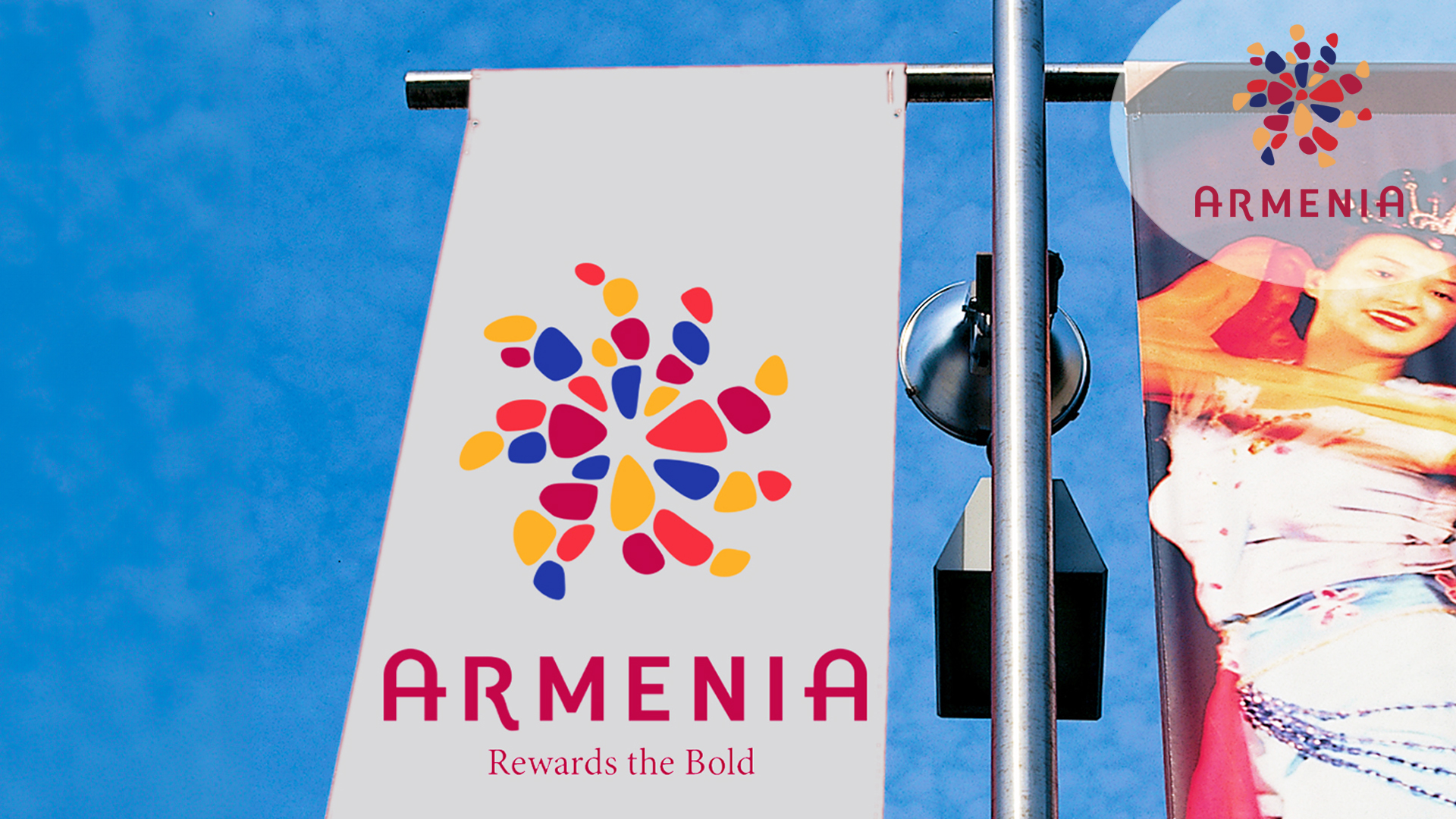
Resilience: The Key to Armenian Survival.
Armenians have survived numerous calamities and invasions throughout history, and their resilience, cultural pride, and commitment to education define the Armenian character. Let’s delve into these aspects to understand how they have shaped the Armenian identity and contributed to their enduring strength.
Cultural Preservation:
Armenians have strongly emphasized preserving their language, traditions, and customs. This commitment to cultural preservation has maintained a sense of identity even in the face of adversity.
- Language: Despite invasions and displacement, the Armenian language has survived and thrived, serving as a medium for cultural expression and communication across generations.
- Traditions: Armenians continue to celebrate and honor their rich cultural heritage through festivals, traditional music and dance, and culinary practices.
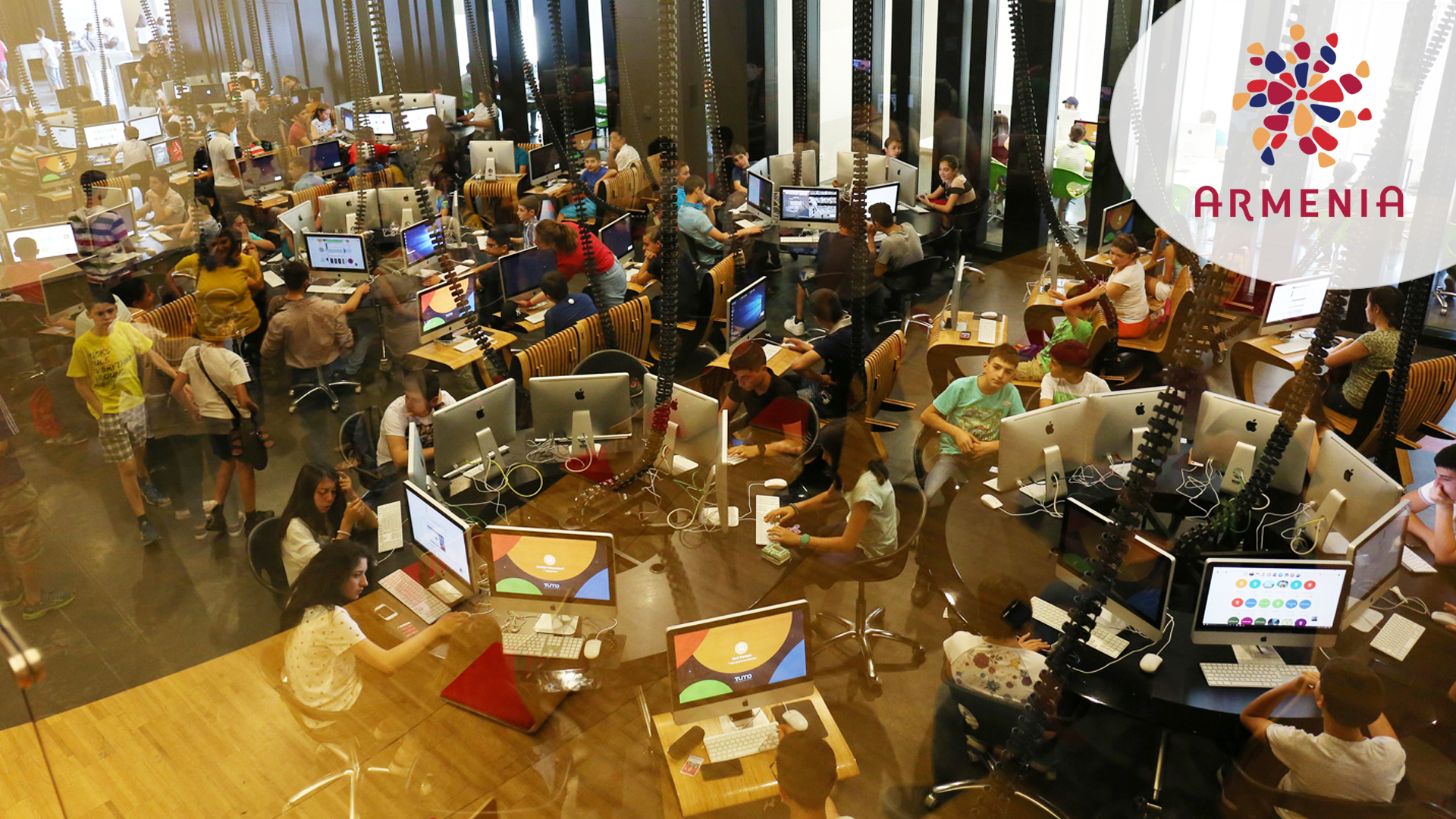
Education and Knowledge:
Armenia values education highly, and establishing institutions like the University of Gladzor in the 13th century reflects the nation’s commitment to learning and knowledge as a means of empowerment.
- Historical Achievements: The University of Gladzor was one of the medieval world’s leading learning centers, contributing significantly to Armenian scholarship and intellectual life.
- Contemporary Focus: Modern Armenia continues to prioritize education, recognizing it as a path to individual and national growth.

The Saint Gregory the Illuminator Cathedral, also known as the Yerevan Cathedral, is the largest cathedral in the Armenian Apostolic Church. Wedding traditions in Armenia. Photo Credit: Freepik AI, Adobe Stock, Karen Minasyam.
This beautiful tradition celebrates the sacred bond of Armenian marriage, where love is crowned with unity and joy. As couples don their crowns within the church, white doves take flight outside, symbolizing peace and new beginnings. This beautiful tradition honors faith, family, and everlasting love. Photo Credit: Freepik AI.
Religion and Church:
The Armenian Apostolic Church unifies Armenians, providing spiritual guidance and preserving culturally significant history.
- Spiritual Leadership: The church has been a source of spiritual resilience, helping Armenians maintain faith and hope through turbulent times.
- Cultural Custodian: Beyond its religious role, the church has safeguarded Armenian history, art, and literature.
Diaspora Networks:
The Armenian diaspora has established strong international networks facilitating knowledge sharing, economic opportunities, and political advocacy.
- Economic Contributions: Diasporic communities contribute significantly to the economies of their host countries and Armenia through remittances and investments.
- Political Advocacy: Armenian diasporas actively lobby and advocate, raising awareness of issues affecting Armenians globally.
- Adaptability and Innovation: Armenians are known for their adaptability and innovation, leading to economic sustainability and growth despite disruptions.
- Entrepreneurship: Many Armenians have excelled in various fields, such as technology, commerce, and science, adapting to changing circumstances and creating new opportunities.
- Innovation: Historical ingenuity, from architectural advances to modern tech startups, showcases Armenian innovation.
- Community Solidarity: A deep sense of community and mutual support has fostered resilience among Armenians.
- Social Cohesion: Strong community bonds ensure that individuals support each other, particularly in times of need.
- Mutual Aid: Traditional mutual aid and support practices continue to thrive, providing a safety net for communities.
- Historical Memory and Storytelling: The collective memory of past hardships has kept the spirit of resilience alive, reinforcing a strong communal identity.
- Oral Traditions: Through storytelling, Armenians pass down their history, ensuring that future generations understand and appreciate their heritage.
- Commemorations: Annual remembrance events, such as those for the Armenian Genocide, keep historical memory alive and strengthen collective resilience.

Respect and tolerance for diverse religious traditions are deeply rooted in Armenia’s history. Photo Source: Adobe AI, Freepik, Adobe Stock.
Armenia: A Historical Beacon of Religious Tolerance and Spiritual Harmony.
Armenians have deep spiritual beliefs and profound respect for all religions. They have never attempted to force Christianity on others, nor have they persecuted any other group for their religious beliefs. This philosophy of religious tolerance has been guided by their own experiences and spiritual history, reflecting a culture of acceptance and peaceful coexistence.
This respect and tolerance for diverse religious traditions is deeply rooted in Armenia’s history. Christianity, which was adopted as the state religion in 301 AD, has played a central role in the cultural and national identity of Armenians. Despite this, Armenians have always maintained a principle of religious freedom and refrained from imposing their beliefs on others. This approach is not only a reflection of their enduring spiritual beliefs but also a testament to their commitment to upholding the rights and dignity of individuals from all faith backgrounds.
We can see this historically and today, as they have preserved Jewish cemeteries from a 16th-century Silk Road settlement in the village of Yeghegis, Armenia. They’ve also preserved and restored mosques, preserved Azeri cemeteries, and built temples for the Yazidi minority, among other acts of respect for various religious communities. This legacy of embracing religious diversity showcases Armenia’s enduring commitment to fostering harmony and mutual respect among different faith traditions.
The Armenian legacy of embracing religious diversity can be seen through numerous historical examples of religious minorities living in harmony within Armenian communities. The country’s monasteries, churches, and religious institutions have often provided refuge and support for various groups seeking shelter or a place to practice their faith freely.
In a world where religious intolerance can often lead to conflict and division, Armenia’s history of religious respect and tolerance serves as an inspiring model. It underscores the importance of understanding, compassion, empathy, and mutual respect among different faith traditions, promoting peace and unity for all people.
Political and Civic Engagement:
Armenians actively engage in political and social activism to secure their rights and protect their communities.
- Activism: Armenians participate in political movements and civil society organizations to advocate for their rights.
- Civic Involvement: High levels of civic engagement reflect the community’s dedication to public welfare and social justice.
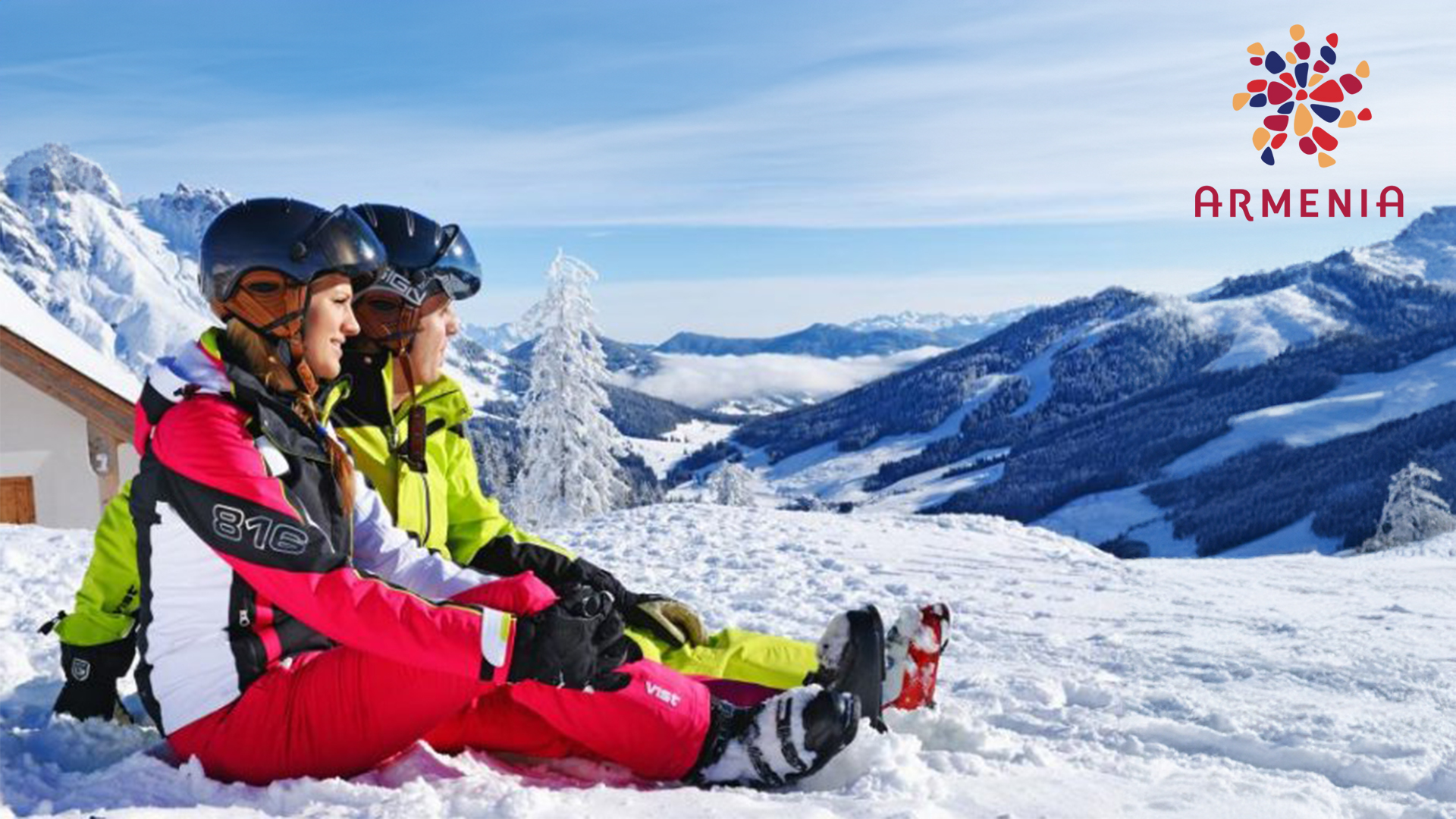
Experience the ultimate skiing adventure in Armenia with state-of-the-art Swiss lifts! Elevate your ride and enjoy breathtaking views as you glide down the pristine slopes. Photo Credit: Karen Minasyan, Adobe Stock, Freepik.


Economic Ingenuity:
Mastery of various crafts, trade, and other activities have enabled Armenians to thrive despite economic challenges.
- Craftsmanship: Historically, Armenians have excelled in trades such as carpet weaving, jewelry making, and pottery.
- Commerce: Diasporic Armenians have been successful merchants and traders, establishing significant commercial networks.
Strategic Alliances:
Forming strategic alliances has provided necessary support during times of conflict and invasion.
- Historical Alliances: Throughout history, Armenians formed alliances with various empires and neighboring states to ensure survival and maintain autonomy.
- Modern Partnerships: Today’s Armenia continues to build strategic relationships at the international level, securing political and economic cooperation.
In summary, Armenians’ survival and resilience through centuries of challenges can be attributed to a combination of cultural preservation, strong educational values, religious unity, extensive diaspora networks, adaptability, and a profound sense of community and identity. These factors have helped Armenians withstand adversities and enabled them to maintain a vibrant and enduring cultural heritage.
By embracing innovation and preserving heritage, Armenia can become a global hub of progress.

The Armenian Archetype: The Sage
The concept of an “Armenian archetype” involves understanding the collective traits, values, and characteristics often associated with Armenian identity and culture. One brand archetype that resonates strongly is “The Sage,” defined by its pursuit of knowledge, wisdom, and truth:
- Valuing Education and Knowledge: Armenians have a long tradition of valuing education and intellectual achievement.
- Cultural Preservation: Armenian culture is deeply rooted in preserving intellectual and spiritual heritage.
- Historical Awareness: Armenians have a strong sense of historical awareness, particularly significant events like the Armenian Genocide.
- Spirituality and Religion: The Armenian Apostolic Church embodies a quest for spiritual understanding and continuity.
- Adaptability and Wisdom in the Diaspora: The Armenian diaspora has shown remarkable adaptability and resilience.
- Art and Literature: Armenians have contributed substantially to arts and literature, reflecting a profound appreciation for human creativity and insight.
- Guidance and Mentorship: Armenians emphasize mentoring and guiding the younger generation to ensure cultural continuity.
Viewing Armenia and its people through the “Sage” archetype highlights their intellectual and spiritual strengths and their role as preservers and conveyors of wisdom through generations.
Vision: Armenia 2050 — A Thriving Hub of Innovation, Heritage, and Global Unity
Creating a unifying vision or a “Big Idea” for Armenia that can bring the nation together, foster collaboration, and propel it forward requires tapping into core values and aspirations. Here’s a vision that might resonate deeply and inspire collective action:
Innovation and Education:
Establishing world-class universities and research centers, fostering international partnerships, and emphasizing STEM education and startup incubation will transform Armenia into a global leader in education, technology, and innovation.
Cultural Renaissance and Preservation:
Celebrate and preserve Armenia’s rich cultural heritage while promoting it globally through investments in cultural institutions, arts, media, global cultural exchange programs, and digitizing historical artifacts.
Economic Growth and Sustainability:
Develop a resilient and diverse economy that promotes sustainable development by strengthening sectors like renewable energy, agriculture, eco-tourism, and IT services, promoting sustainable practices, and developing modern infrastructure.
Global Armenian Network:
Harness the power of the Armenian diaspora for national development by creating a global network platform to connect professionals, investors, students, and entrepreneurs, facilitating diaspora investments, and organizing annual global forums.
Social Unity and Inclusivity:
Build a cohesive, inclusive society that values diversity and collective well-being by promoting equitable access to education, healthcare, and employment, celebrating diversity, and implementing programs to support vulnerable populations.
To implement this vision, Armenia should engage in national dialogue and consensus-building, develop comprehensive strategic planning, secure funding through domestic and international partnerships, and establish mechanisms for regular monitoring and evaluation.
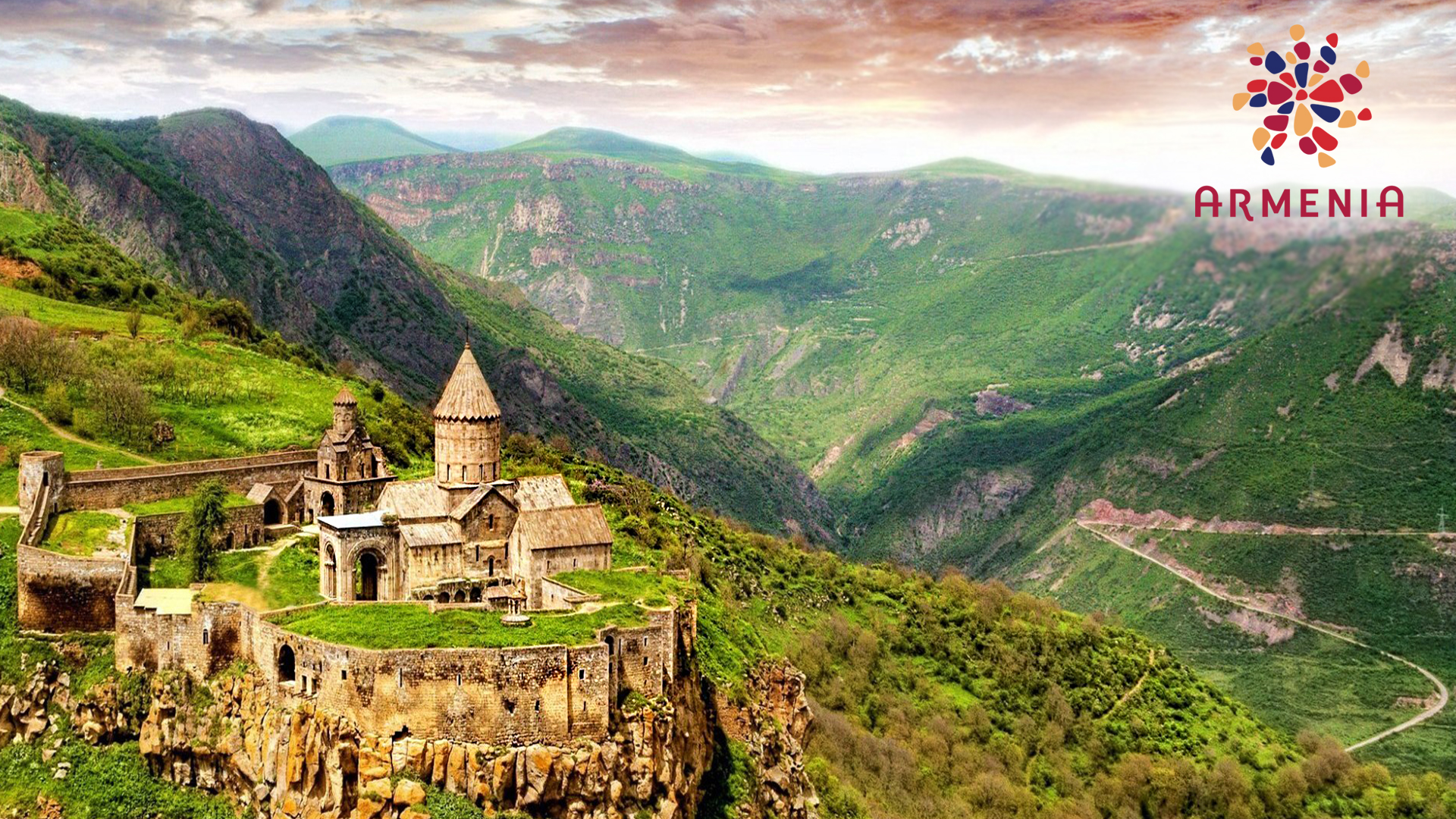
Armenian Values
The primary values ingrained in Armenian culture and identity revolve around heritage, community, and resilience:
Family and Community: Family is the cornerstone of Armenian society, fostering a close-knit community where individuals support each other.
Cultural Heritage and Pride: Preserving and celebrating Armenia’s rich history and cultural traditions is central to its identity.
Resilience and Perseverance: Armenians have faced numerous challenges and continue to remain steadfast and hopeful.
Education and Knowledge: Education is highly valued, driving innovation, economic growth, and cultural enrichment.
Hospitality and Generosity: Warm hospitality and generosity are fundamental aspects of Armenian culture, promoting a welcoming and inclusive community.
These values collectively shape the Armenian way of life, influencing behaviors, traditions, and societal norms. They help maintain a strong sense of identity and cohesion among Armenians worldwide.
Armenia’s vision for 2050 aims to bridge its rich past with a dynamic future of innovation and unity.
Armenia’s Aspirations: Future Forward
Armenia has the potential to position itself as a hub for innovation, technology, and entrepreneurship. Here are several potential aspirations:
Innovation Gateway:
Armenia can become a gateway for innovation, connecting East and West through cutting-edge technology and a vibrant startup ecosystem.
Tech Oasis:
Armenia can attract innovators and investors worldwide by fostering a supportive environment for tech startups and talent — the convergence of seven technologies shaping our future.
- Artificial Intelligence (AI)
- Robotics
- Virtual Reality (VR) and Augmented Reality (AR)
- Blockchain
- Digital Manufacturing / 3D Printing
- Internet of Things (IoT)
- Biotechnology
These converging technologies will transform various industries and significantly impact our daily lives.
Creative Powerhouse:
Armenia can drive artistic innovation and cultural entrepreneurship by leveraging its cultural heritage and creative industries.
Silicon Valley of the Caucasus:
Armenia can aim to become a tech hub in the Caucasus region, renowned for its startup culture and technological advancements.
Innovation Capital:
Armenia can lead research and development, technology transfer, and knowledge-based industries.
Startup Republic:
Armenia can embrace the spirit of entrepreneurship, fostering a culture of innovation and risk-taking.
By embracing these visions and working towards creating a supportive ecosystem for innovation, entrepreneurship, and technology, Armenia can position itself as a leading force in driving economic growth, technological advancement, and global competitiveness in the years to come.
Armenia 2050: A Thriving Hub of Innovation, Heritage, and Global Unity” aims to bridge Armenia’s rich past with a dynamic future. By focusing on innovation, cultural preservation, economic sustainability, global collaboration, and social unity, this vision can inspire collective effort and propel Armenia into a prosperous and influential position on the global stage.
The Next Generation:
Teaching the young generation of Armenians to carry the strengths of their heritage while fostering a spirit of collaboration, cooperation, support for the homeland and local communities, and safeguarding natural resources and the environment is crucial for their continued resilience and growth. Here are some lessons that can help achieve this:
Embracing Cultural Identity
1. Learn and Preserve the Language:
- Importance: Understanding and preserving the Armenian language is vital for maintaining cultural identity.
- Action: Encourage participation in language classes, cultural events, and literature readings.
2. Celebrate Traditions and Customs:
- Importance: Traditions serve as a link to the past and a foundation for community building.
- Action: Participate in and organize traditional festivals, teach folk dances and songs, and participate in cultural celebrations.
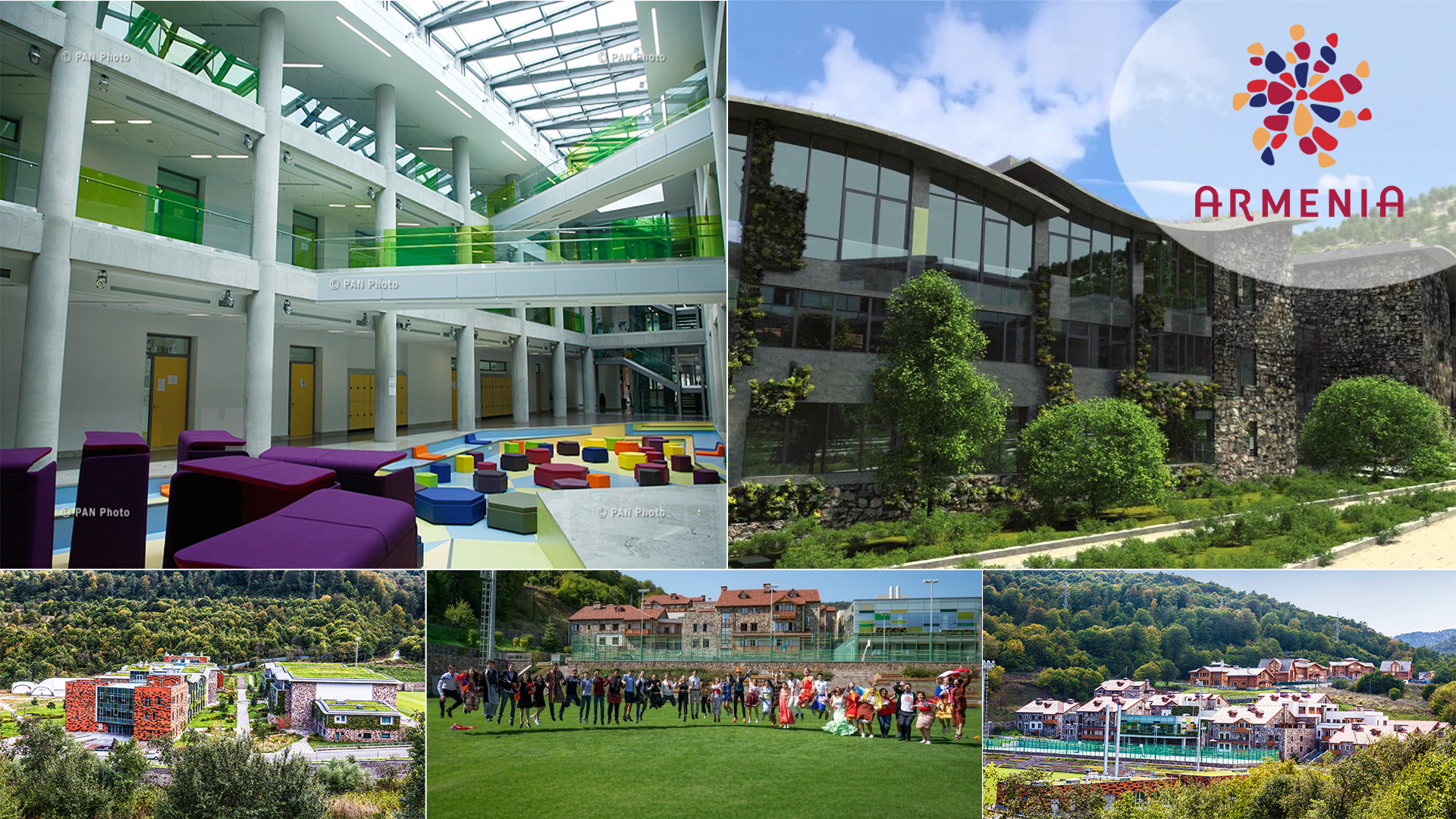
Valuing Education and Knowledge
3. Commitment to Education:
- Importance: Education is a key to empowerment and progress.
- Action: Maintain high educational standards, encourage lifelong learning, and promote the pursuit of higher education both within and outside Armenia.
4. Promote Critical Thinking:
- Importance: Critical thinking fosters innovation and adaptability.
- Action: Engage in research, debates, and discussions; encourage the questioning of assumptions and exploration of new ideas.
Fostering Resilience and Adaptability
5. Learn from History:
- Importance: Understanding historical resilience inspires strength in facing future challenges.
- Action: Educate about historical events like the Armenian Genocide and the Karabakh conflict, emphasizing lessons of perseverance and unity.
6. Adopt a Growth Mindset:
- Importance: A growth mindset encourages adaptability and lifelong learning.
- Action: Promote the idea that challenges are opportunities for growth and that failure is a part of the learning process.
Enhancing Community Solidarity
7. Strengthen Family Bonds:
- Importance: Family is the backbone of social support.
- Action: Encourage family gatherings, respect for elders, and family-based activities reinforcing bonds.
8. Active Community Participation:
- Importance: Strong communities arise from active participation and mutual support.
- Action: Volunteer in community service, participate in local governance, and join community organizations and groups.
Encouraging Civic and Environmental Responsibility
9. Engage in Civic Activities:
- Importance: Civic engagement ensures a healthy, strong society.
- Action: Encourage participation in local and national elections, awareness campaigns, and social justice initiatives.
10. Protect Natural Resources and the Environment:
- Importance: Sustainable natural resources are crucial for the future.
- Action: Promote environmental education, participate in local and global environmental conservation projects, and adopt sustainable practices in daily life.
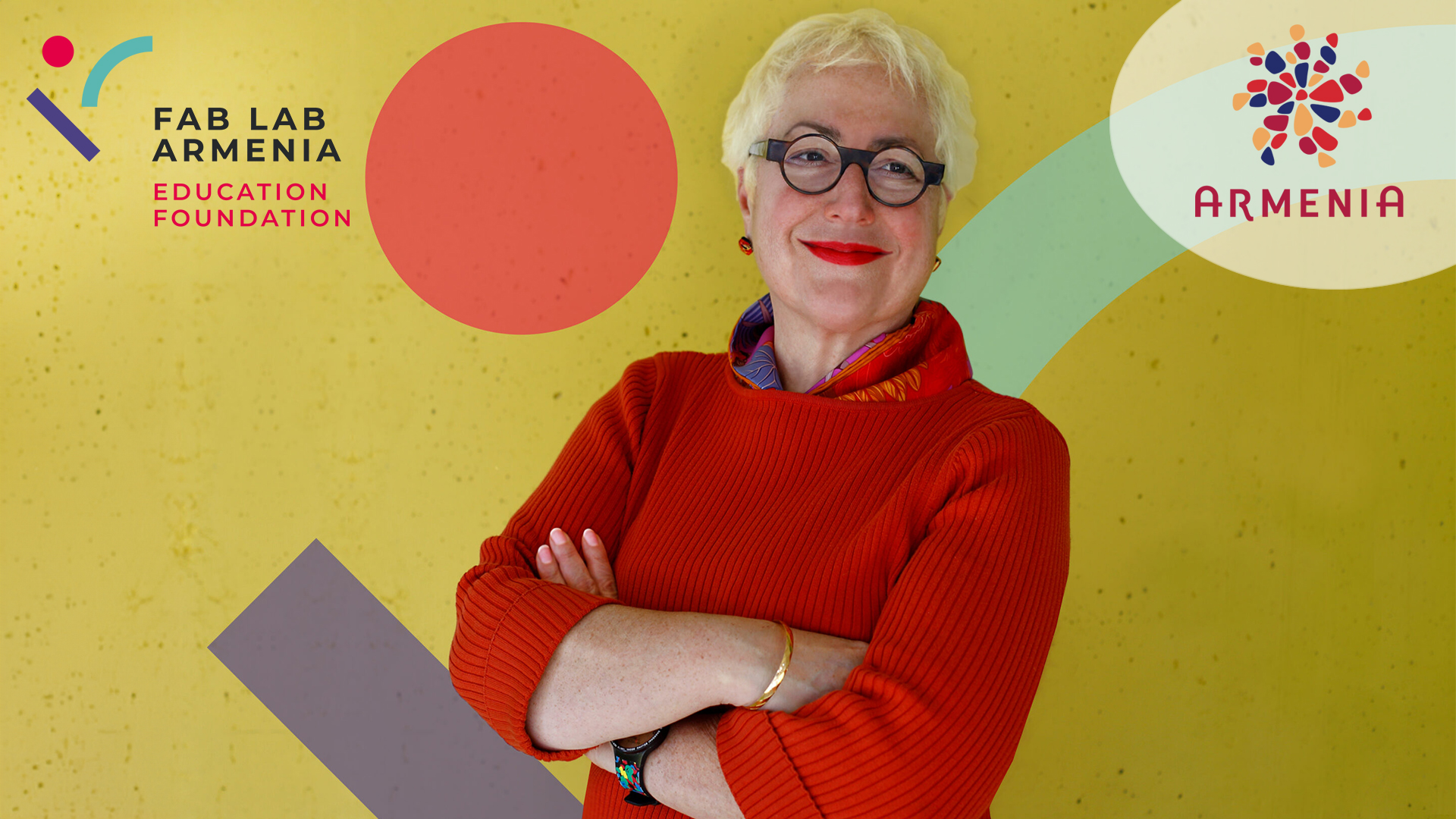
Promoting Collaboration and Cooperation.
11. Foster Teamwork:
- Importance: Collaboration is key to achieving large-scale goals.
- Action: Encourage group projects, sports, and community-driven initiatives that require working together.
12. Develop Networking Skills:
- Importance: Effective networking can open doors to new opportunities.
- Action: Teach the importance of building and maintaining professional and social networks within the Armenian community and globally.
Supporting the Homeland.
13. Economic Contribution:
- Importance: A strong economy is critical for national development.
- Action: Encourage investment in Armenian businesses, support local enterprises, and contribute to economic initiatives.
14. Diaspora-Homeland Connection:
- Importance: The Armenian diaspora plays a significant role in national development.
- Action: Strengthen ties between the diaspora and Armenia through cultural exchanges, economic projects, and joint ventures.
Promoting Global Citizenship.
15. Appreciate Diversity:
- Importance: Understanding and appreciating diversity fosters global harmony.
- Action: Encourage learning about different cultures and participating in international forums and exchange programs.
16. Uphold Universal Values:
- Importance: Universal values like human rights and justice transcend cultural boundaries.
- Action: Promote the understanding and practice of universal values through education and activism.
By teaching these lessons, we can help the young generation of Armenians uphold their cultural strengths while embracing new values that will enable them to thrive in a rapidly changing world.
Resolving Historical Tensions and the Need for Dialogue.
The historical animosity between Armenians and Turks/Azeris is complex and rooted in historical events, cultural differences, and political conflicts:
- Historical Conflicts: The Armenian Genocide and the denial of this tragic event by some Turkish and Azeri authorities have strained relations.
- Territorial Disputes: Ongoing territorial disputes, especially concerning Nagorno-Karabakh, have heightened tensions.
- Cultural and Religious Differences: Distinct cultural identities, languages, and religious affiliations have sometimes been exploited to sow division.
- Nationalist Narratives: Nationalist ideologies have promoted hostility and distrust between these groups.
- Geopolitical Factors: Geopolitical considerations have complicated relationships in the Caucasus region.
- Economic Competition: Competition over control and access to economic resources has fueled animosity.
- Lack of Dialogue and Reconciliation: The absence of open dialogue and acknowledgment of historical grievances perpetuates misunderstandings.
Addressing these tensions through mutual respect, dialogue, and reconciliation is crucial for fostering peace and understanding.
One Out of Five Turks May Have Armenian Ancestry.
Turks from Central Asia settled in Anatolia in the 11th century through the conquests of the Seljuk Turks. This began the transformation of the region, which was mainly Greek and Armenian-speaking, into a Turkish-Muslim one.
For almost 500 years, more than 2,000 Armenian children were taken yearly from Armenian villages and trained to become Janissaries in the Ottoman Empire. They began life as poor Christian boys, often living in far-off provinces of the Ottoman Empire. Once they converted to Islam and became Janissaries, they could climb the Ottoman social ladder and become powerful kuls, members of the Sultan’s household. One example is Mimar Sinan (April 15, 1489 — July 17, 1588) — chief Armenian Ottoman architect and civil engineer for sultans Suleiman I, Selim II, and Murad III. For fifty years, he was responsible for the construction or supervision of every major building in the Ottoman Empire.
Close cooperation between Armenians and Turks has continued for centuries. An Armenian linguist, Agop Dilâçar (Hagop Martayan), born in Istanbul, was commissioned by Atatürk to create the modern Turkish language, and Dilâçar was the person who officially proposed the surname Atatürk to the founder of Turkey, Mustafa Kemal, Pasha!
This is a complex and sensitive issue due to historical context, intermarriage, and the social and political dynamics surrounding ethnic identity in Turkey. Several factors contribute to the difficulty:
Historical Context: During the late 19th and early 20th centuries, significant numbers of Armenians, particularly during and after the Armenian Genocide (1915–1917), were forcibly assimilated into Turkish society. Many Armenians converted to Islam and adopted Turkish identities to survive.
Intermarriage: Over subsequent generations, intermarriage between Armenians and Turks further obscured distinct ethnic boundaries.
Forced Integration and Conversion: Some Armenians were forced to convert to Islam and assimilate into Turkish society over hundreds of years.
Voluntary Assimilation: Over the decades, some Armenians voluntarily assimilated into Turkish society for various reasons, including social integration and economic opportunity.
Lack of Records: The lack of comprehensive historical and genetic records makes it difficult to provide an accurate estimate. Identity records were often altered or destroyed during periods of turmoil.
Genetic Evidence: Research in population genetics might offer some insights, but such studies are often limited by various factors, including political sensitivities and people’s willingness to participate. Currently, DNA genetic testing is banned in Turkey due to the concern that people may identify less as Turks and more with their specific ethnic ancestries, such as Greek, Armenian, Kurdish, Georgian Laz, and Balkan.
Confidential Identities: Many individuals may not publicly acknowledge their Armenian ancestry due to historical trauma and social stigmas, further complicating the estimation.
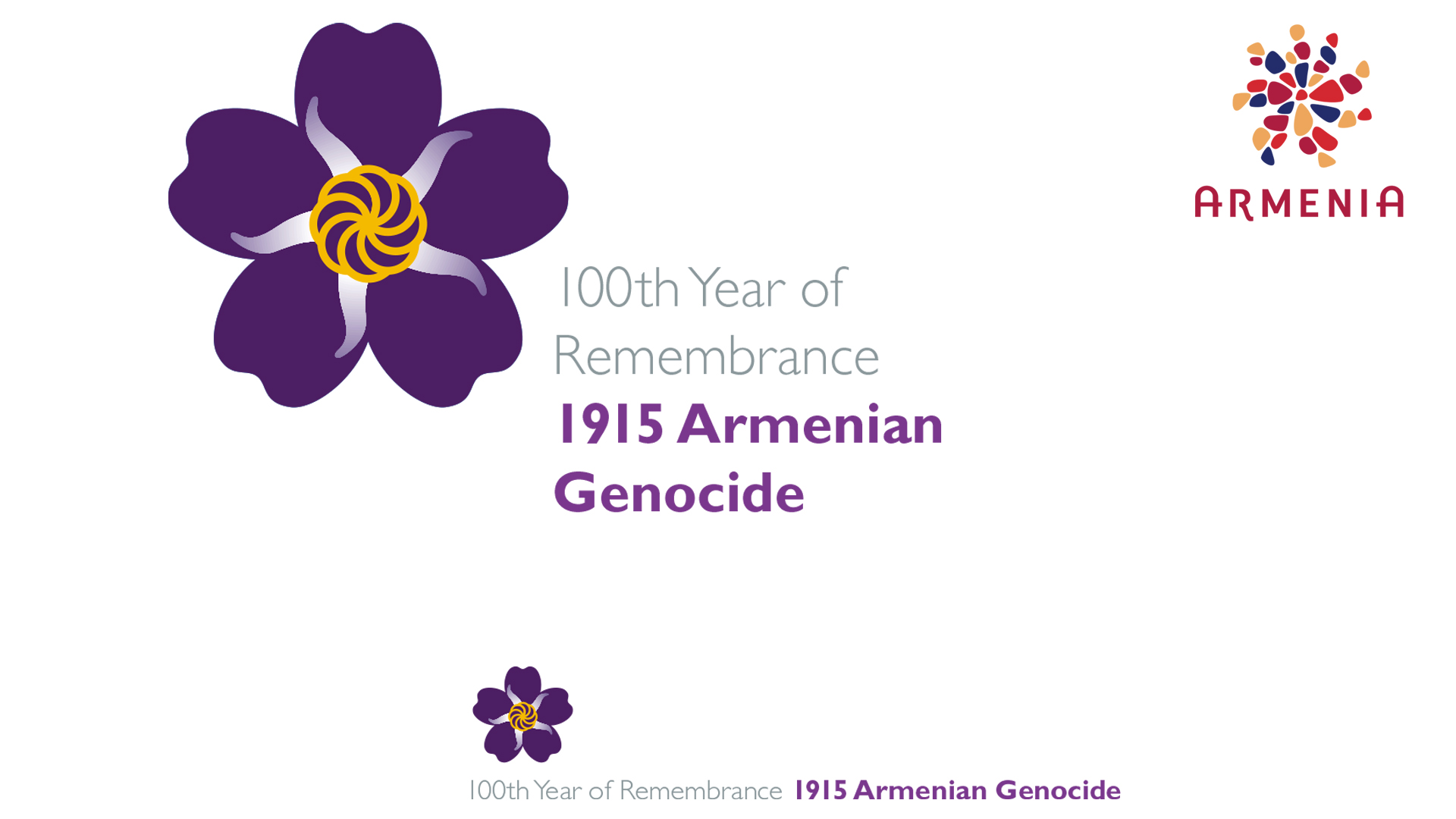

Before the genocide, Armenians held a subordinate yet somewhat protected status within Ottoman society. However, due to a series of military defeats and territorial losses, particularly during the 1912–1913 Balkan Wars, Turkish CUP leaders feared Armenian independence. This led to mass deportations and killings to prevent any potential autonomy. Design redit: Vazken Kalayjian.
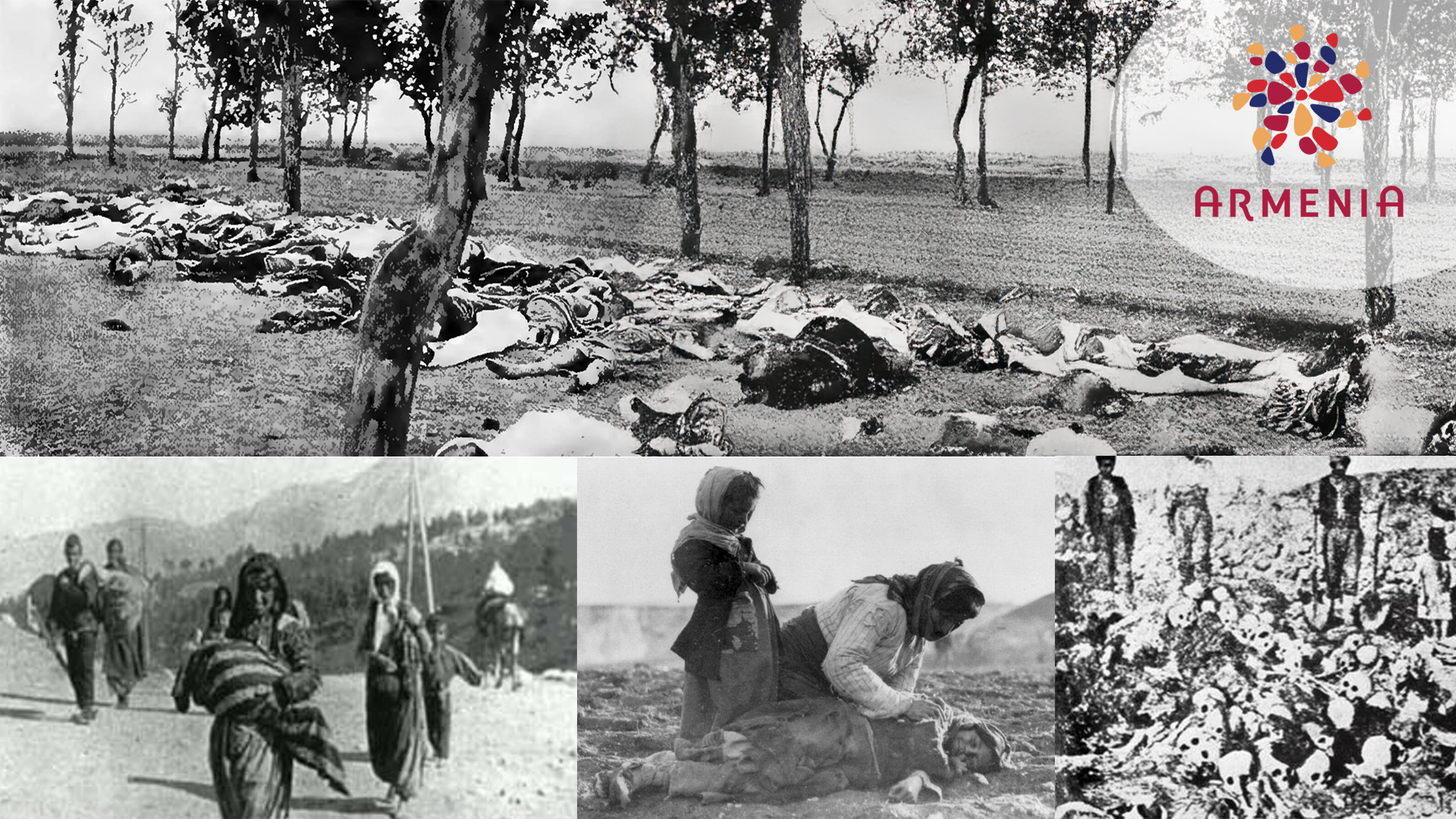
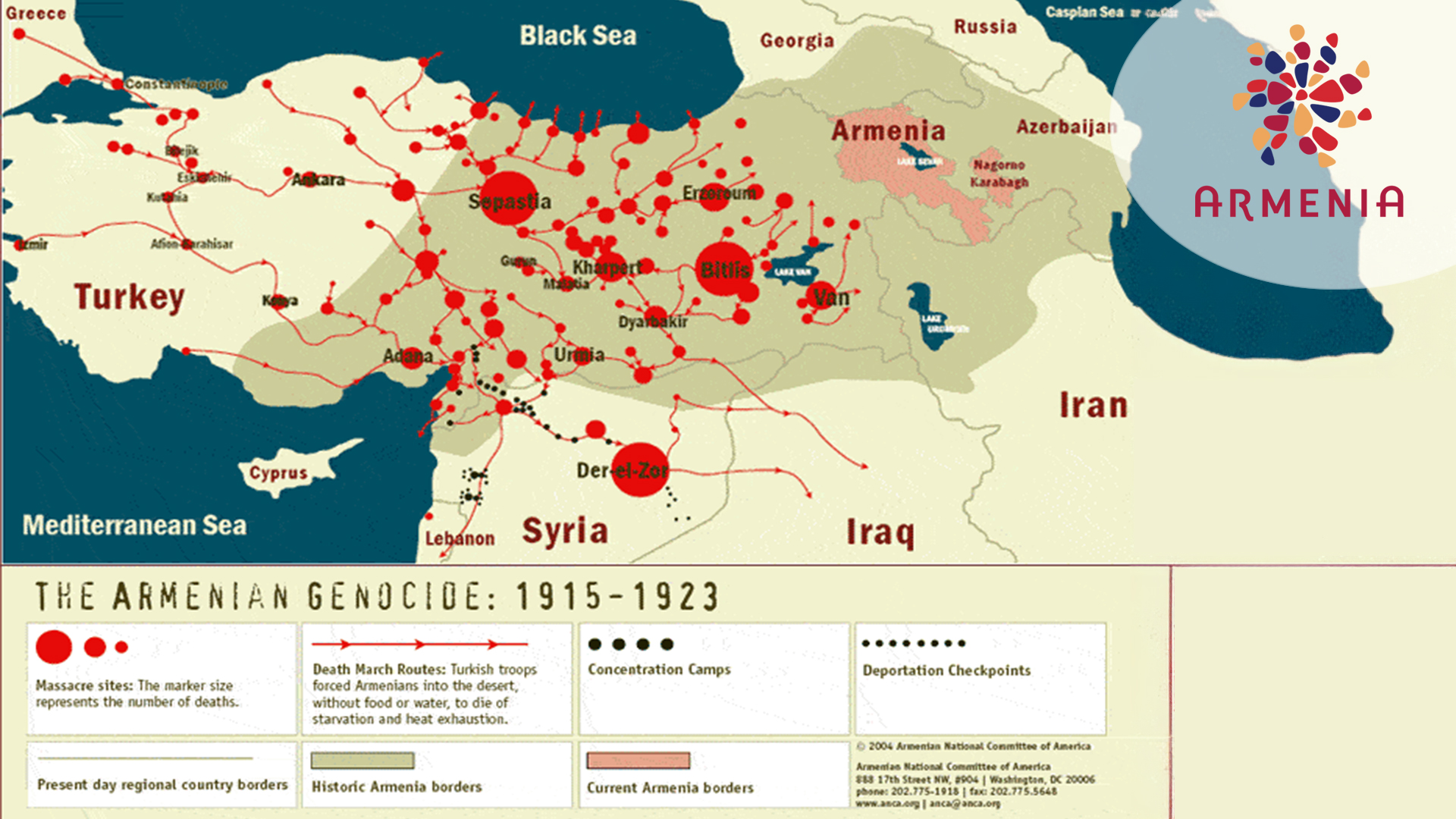
Historical Events:
The Armenian Genocide, which took place from 1915 to 1923, resulted in the deaths of an estimated 1.5 million Armenians. This event significantly impacted the Armenian population in Turkey, and it is difficult to determine how many Armenians survived and assimilated into Turkish society. The Hamidian massacres, also called the Armenian massacres, were mass killings of Armenians in the Ottoman Empire during the mid-1890s. Estimated casualties ranged from 100,000 to 300,000, resulting in 50,000 orphaned children. The massacres are named after Sultan Abdul Hamid II, who, in his efforts to maintain the imperial domain of the declining Ottoman Empire, reasserted pan-Islamism as a state ideology. Although the massacres were mainly aimed at the Armenians, in some instances, they turned into indiscriminate anti-Christian pogroms, including the Diyarbekir massacres, where, according to one contemporary source, up to 25,000 Assyrians were also killed.
Cultural Assimilation:
Many Armenians have assimilated into Turkish culture and society over the centuries. This has made it more difficult to identify individuals with Armenian ancestry, as they may not identify as Armenian or need to be made aware of their Armenian heritage.
Lack of Reliable Data:
No official census data on the number of Turks with Armenian ancestry exists. Estimates vary widely, and there is no way to verify their accuracy.
Despite these challenges, some studies have attempted to estimate the percentage of Turks with Armenian ancestry:
One out of Five Turks Have Armenian Ancestry. A 2008 study conducted by the Hrant Dink Foundation estimated that between 2% and 5% of Turks have Armenian ancestry.
It is also important to note that the question of Armenian ancestry in Turkey is highly sensitive. There is a long history of tension between Armenians and Turks, and the issue of Armenian identity is often politicized. As a result, it is essential to be respectful of all perspectives when discussing this issue.

Learn from history to avoid repeating it. I am hopeful that in my lifetime, these five neighboring people: Turks, Armenians, Azeris, Georgians, and Iranians will have very peaceful and friendly relations with each other.

Lessons From Switzerland.
Switzerland’s transformation from a landlocked country surrounded by potential threats to a prosperous and neutral nation offers valuable lessons:
Neutrality and Diplomacy: Armenia can learn from Switzerland’s longstanding policy of neutrality and its role as a mediator in international conflicts. Switzerland’s diplomatic expertise and commitment to peacebuilding can provide valuable insights for Armenia in navigating regional tensions and promoting dialogue.
Innovation and Education: Switzerland’s emphasis on innovation, research, and vocational training has positioned it as a global leader in technology and education. Armenia can draw lessons from Switzerland’s strong vocational training system and research collaborations to boost its own innovation ecosystem and workforce development.
Banking and Finance: Armenia can consider Switzerland’s success in the banking and finance sector as a model for developing a stable and reputable financial services industry. Learning from Switzerland’s regulatory framework, transparency standards, and economic expertise can help Armenia strengthen its financial sector and attract investment.
Infrastructure and Sustainability: Switzerland’s investments in sustainable infrastructure, transport networks, and environmental conservation can offer Armenia valuable insights into promoting sustainable development and green initiatives. Learning from Switzerland’s approach to balancing economic growth with environmental preservation can help Armenia address its sustainability challenges.
Cultural Identity and Heritage: Switzerland’s focus on preserving cultural heritage, multilingualism, and regional diversity can inspire Armenia to celebrate its cultural richness and diversity. Embracing and promoting Armenian traditions, languages, and arts can strengthen national identity and unity.
Adaptability and Resilience: Switzerland demonstrated adaptability and resilience in the face of changing geopolitical dynamics, economic challenges, and technological disruptions. The ability to evolve and diversify its economy helped Switzerland weather various storms and remain competitive globally.
By leveraging these factors and maintaining a strategic focus on neutrality, stability, innovation, and international engagement, Switzerland transformed itself into a prosperous and resilient nation despite its initial challenges of being landlocked and surrounded by potential threats.

Switzerland and History of Wars:
Switzerland has maintained a policy of neutrality for centuries, which has helped it avoid being directly involved in wars. Switzerland was last involved in a military conflict during the Sonderbund War in November 1847. This civil war was fought between the conservative Catholic cantons of Switzerland (known as the Sonderbund) and the other cantons supporting the federal government. After the federal forces decisively defeated the Sonderbund forces, Switzerland transitioned towards a more centralized federal state. Since then, Switzerland has not participated in any wars and has maintained its stance of neutrality.
Last Invasion: Switzerland was last invaded during the Napoleonic Wars (1798–1815). In 1798, French troops under Napoleon Bonaparte invaded Switzerland, leading to the collapse of the Old Swiss Confederacy. The invasion established the Helvetic Republic, a French satellite state, and marked a period of significant political and social changes in Switzerland.
World War II: While Switzerland remained neutral during World War II, its territory was violated on a few occasions. German and Italian aircraft violated Swiss airspace during the war. Additionally, there were some border incidents and limited violations of Swiss territory by both Axis and Allied forces during the conflict.
These instances aside, Switzerland’s geographic location, armed neutrality, and strong defensive preparations have historically deterred foreign invasions. The Swiss military’s strategy of promoting national defense and maintaining mountain fortifications has been crucial in safeguarding Swiss territory from potential threats.

Alpine Tourism:
Switzerland’s establishment as a premier destination for alpine tourism, including attracting the first group of English tourists for skiing in 1917, involved several strategic efforts in protecting its mountains and nature, developing infrastructure, and leveraging its position of neutrality during World War I. Here’s how these elements came together:
Protection of Mountains and Nature:
- Conservation Efforts: Switzerland has a long history of valuing and protecting its natural landscapes. Early conservation efforts included establishing protected areas and implementing regulations to preserve the natural environment. These efforts ensured that the Swiss Alps remained pristine and attractive to tourists seeking unspoiled natural beauty.
- Sustainable Practices: The Swiss have long promoted sustainable practices in managing their natural resources, balancing development with conservation to maintain the ecological integrity of the mountainous regions.
Development of Infrastructure:
- Railway and Transport: In the 19th and early 20th centuries, Switzerland invested heavily in building extensive railway networks and efficient transportation systems. Completing railway lines to alpine regions made these areas more accessible to tourists, facilitating travel to remote mountain destinations.
- Hotel and Resort Development: Significant investment was made in developing hotels and resorts in alpine areas. Entrepreneurs and local communities seized the opportunity to cater to the growing number of international tourists seeking mountain experiences.
Leveraging Neutrality During WWI:
- Neutrality and Stability: During World War I, Switzerland maintained neutrality, avoiding the destruction many other European countries faced. This stability made Switzerland an attractive destination for tourists seeking safety and respite from the war.
- Marketing and Promotion: Swiss tourism organizations and local businesses actively promoted Switzerland as a refuge of peace and natural beauty amidst the chaos of war. This marketing emphasized the country’s neutrality and the safety it offered.
The 1917 Event: First Group of English Tourists for Skiing:
- Historical Context: By 1917, World War I was drawing to a close, and there was a growing desire for leisure and recuperation activities among those impacted by the war, including soldiers and civilians.
- Entrepreneurial Initiative: Swiss hotel owners and entrepreneurs saw an opportunity to attract international tourists, particularly from England, where skiing was becoming increasingly popular. These pioneers organized and invited the first group of English tourists for a skiing holiday in the Swiss Alps.
- Organized Tours and Packages: The first organized ski tours often included complete packages covering transportation, accommodation, and skiing lessons. These well-organized tours lowered the barrier to entry for tourists unfamiliar with mountain sports and travel logistics.
- Infrastructure and Resorts: Key alpine resorts like St. Moritz already had established reputations as winter sports destinations. These resorts had the infrastructure to host international visitors, including ski slopes, ski schools, and comfortable accommodations.
Switzerland’s ability to attract the first group of English tourists for skiing in 1917, shortly after World War I, resulted from a combination of effective conservation and sustainable practices, strategic infrastructure development, and leveraging its position as a neutral and stable country during tumultuous times. By promoting its natural beauty, safety, and world-class facilities, Switzerland successfully established itself as a premier destination for alpine tourism. It set the stage for continued prominence in the global tourism industry.
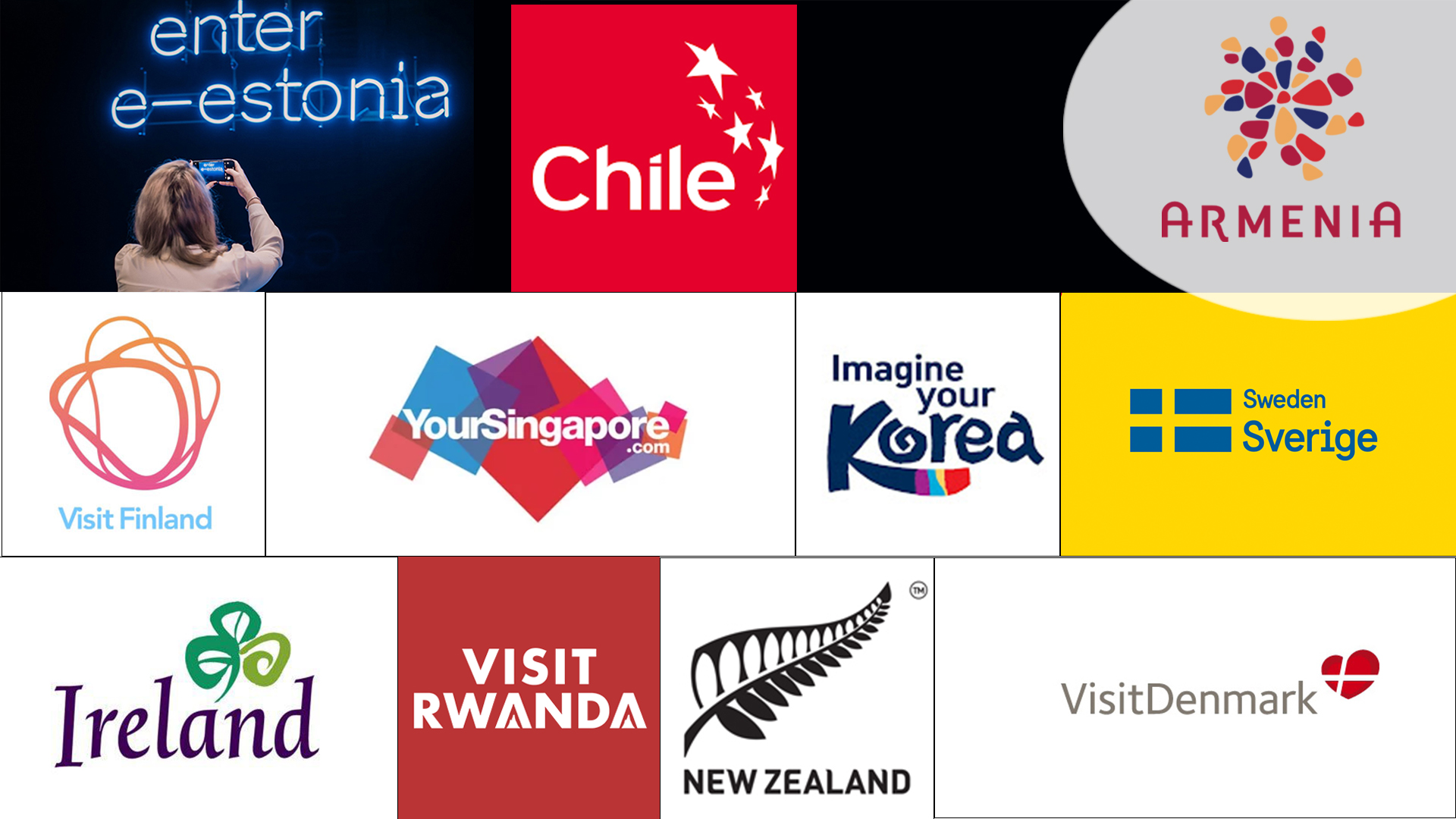
Exploring pathways to progress: Armenia can draw inspiration from global leaders in innovation and sustainability. From Estonia’s e-governance and Finland's investment in education to Chile's renewable energy initiatives and Singapore’s smart urban planning, these nations offer valuable lessons in driving economic growth, fostering equity, and promoting environmental stewardship.
Lessons from Global Examples:
Armenia can draw inspiration and learn valuable lessons from various countries that have successfully navigated challenges and charted paths toward sustainable development, innovation, and progress. Here are some notable examples:
Estonia: Known for its digital transformation and emphasis on e-governance, Estonia can serve as a model for leveraging technology and innovation to drive economic growth, efficiency, and transparency.
Finland: Finland’s strong focus on education, research, and innovation has helped build a knowledge-based economy. Armenia can learn from Finland’s investment in education and technology to nurture a skilled workforce and drive economic development.
Chile: Chile has made significant progress in environmental sustainability and renewable energy. Armenia can look to Chile as an example of transitioning to clean energy sources and promoting sustainable practices to address environmental challenges.
Ireland: Ireland’s success in attracting foreign investment and developing a thriving tech industry can offer insights for Armenia in fostering a favorable business environment and promoting entrepreneurship and innovation.
Singapore: Singapore’s strategic urban planning, efficient governance, and focus on infrastructure development have propelled it to become a global economic hub. Armenia can benefit from Singapore’s experience in smart city initiatives and sustainable urban development.
New Zealand: New Zealand’s inclusive and people-centered policies, emphasis on social welfare, and commitment to environmental conservation can provide valuable lessons for Armenia in promoting social unity, equity, and sustainable development.
South Korea: South Korea’s rapid economic growth, transformation into a high-tech hub, and focus on research and development can inspire Armenia to foster industrial innovation, technological advancement, and international competitiveness.
Rwanda: Rwanda’s remarkable post-conflict recovery, emphasis on reconciliation, and strong leadership in governance and development can offer Armenia insights into fostering national unity, peacebuilding, and inclusive growth.
Innovation and Design Thinking:
In the world of innovation and design, the small Nordic countries of Sweden, Norway, and Denmark have demonstrated remarkable prowess in cultivating design thinking and fostering globally successful brands. These nations, with a combined population of just over 22 million, have transcended their size limitations to create jobs, drive economic prosperity, and establish a formidable global presence through their iconic companies.

Sweden, with a population of approximately 10.5 million, has produced renowned brands such as IKEA, H&M (Hennes & Mauritz), Ericsson, Volvo, Absolut Vodka, Spotify, and Vattenfall, each contributing significantly to the country’s economic landscape. The dollar values of these companies underscore their immense impact — ranging from IKEA’s $18 billion valuation to Spotify’s staggering $50 billion worth.

Norway, home to about 5.4 million people, boasts a roster of major global brands like Equinor (formerly Statoil), Norsk Hydro, Telenor, and Yara International, among others. Equinor leads the pack at an impressive $57 billion valuation. These companies not only bolster the Norwegian economy but also project a strong international influence.

Source: Brand Finance. Photo Credit: Wikipedia.
Denmark, with a population of around 5.9 million, stands out for brands like Maersk, Novo Nordisk, LEGO, and Carlsberg Group. Novo Nordisk commands an outstanding value of $138 billion. These brands are testaments to Denmark’s commitment to innovation and quality, which has helped it thrive on the global stage.
Armenia can learn from the success of these Nordic countries in developing design-centric brands that extend beyond monetary value; they exemplify a culture of innovation, sustainability, and excellence that has solidified their reputation as leaders in the global business landscape.

By studying the experiences and strategies of these countries, Armenia can identify best practices, innovative approaches, and policies that align with its unique context and challenges. Drawing on the successes and lessons learned from diverse nations can help Armenia shape a powerful vision for its future and chart a path toward sustainable growth, prosperity, and global influence.
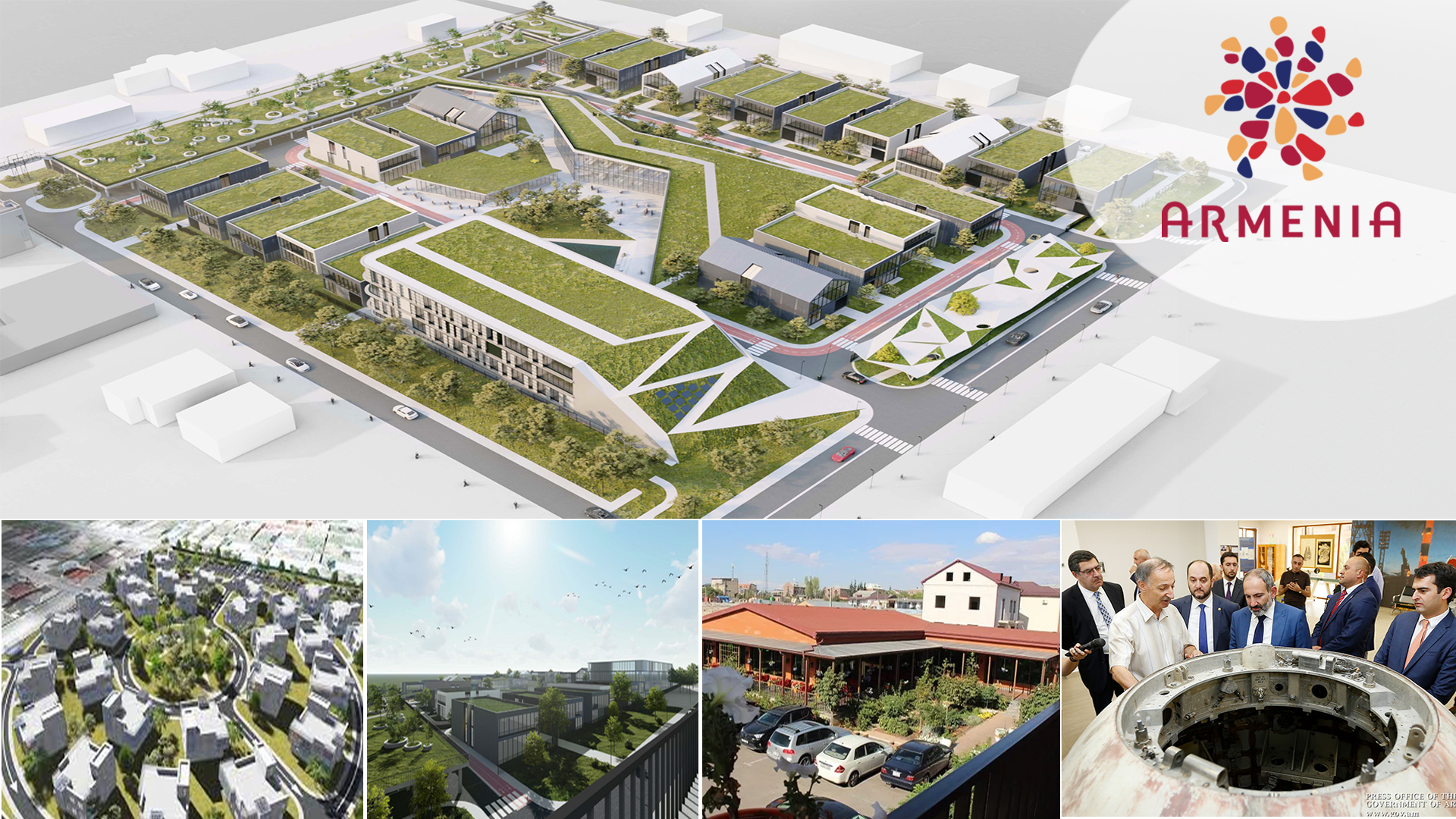
Welcome to the Engineering City, where innovation meets collaboration! This dynamic hub is designed for high-tech engineering companies, offering advanced facilities and resources to tackle the complex challenges of the 21st century. Here, engineering, science, and education converge to foster groundbreaking solutions. Together, we’re building a brighter future through strategic partnerships and cutting-edge technology.
Armenia 2050: A Thriving Hub of Innovation, Heritage, and Global Unity.
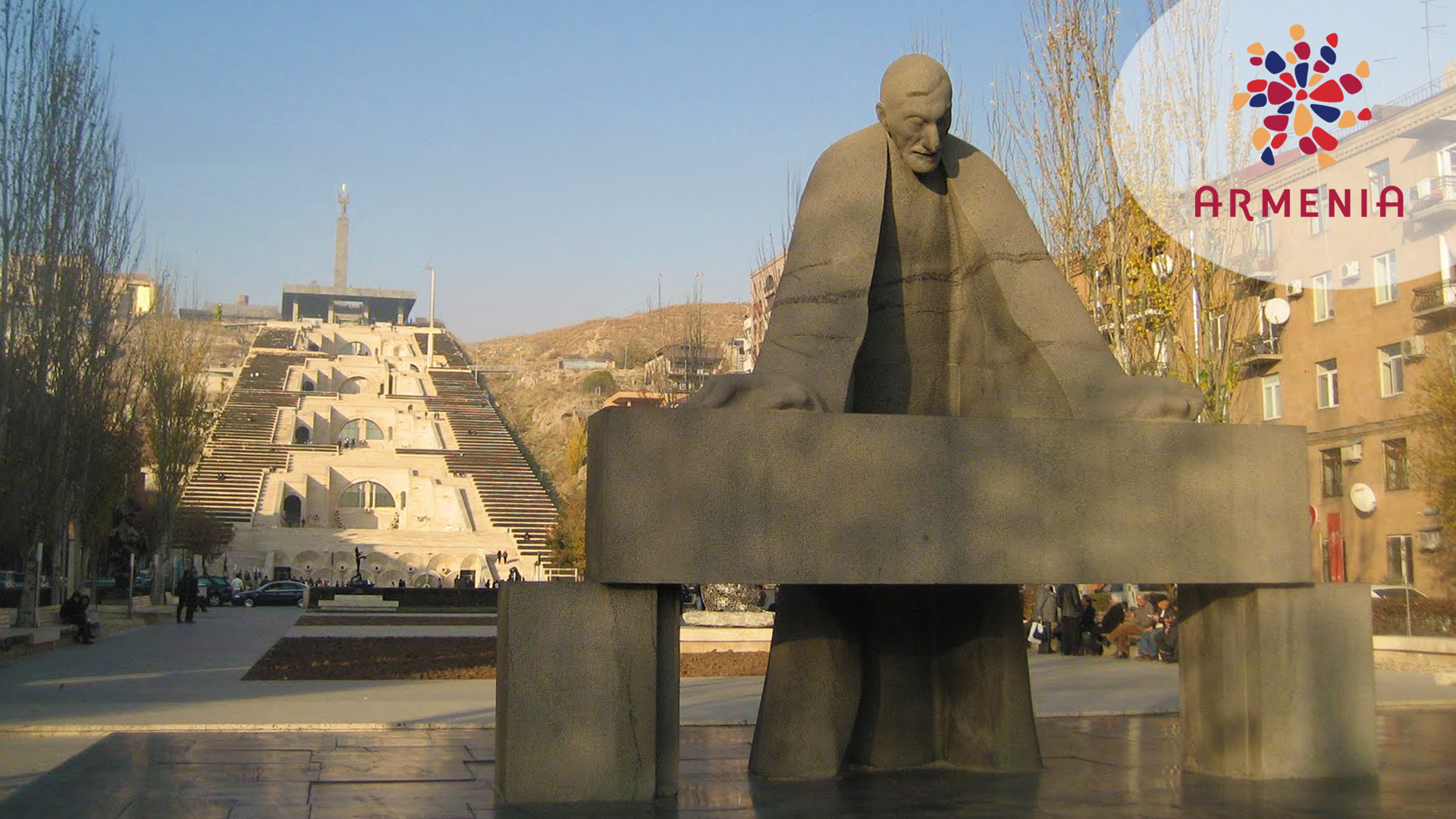
Conclusion:
“Armenia 2050: A Thriving Hub of Innovation, Heritage, and Global Unity”
A Neutral Country at peace with all its neighbors aims to bridge Armenia’s rich past with a dynamic future. By focusing on knowledge, innovation, cultural preservation, economic sustainability, global collaboration, and social unity, this vision can inspire collective effort and propel Armenia into a prosperous and influential position on the global stage. Armenia can forge a path toward a sustainable, innovative, and unified future by embracing the lessons from history and other nations.
Armenia’s location on the strategic seam between Europe and Asia, as well as strong ties between the American and Armenian people, make the country’s stability and prosperity an important US interest. Vision: Armenia 2050 — A Thriving Hub of Innovation, Heritage, and Global Unity
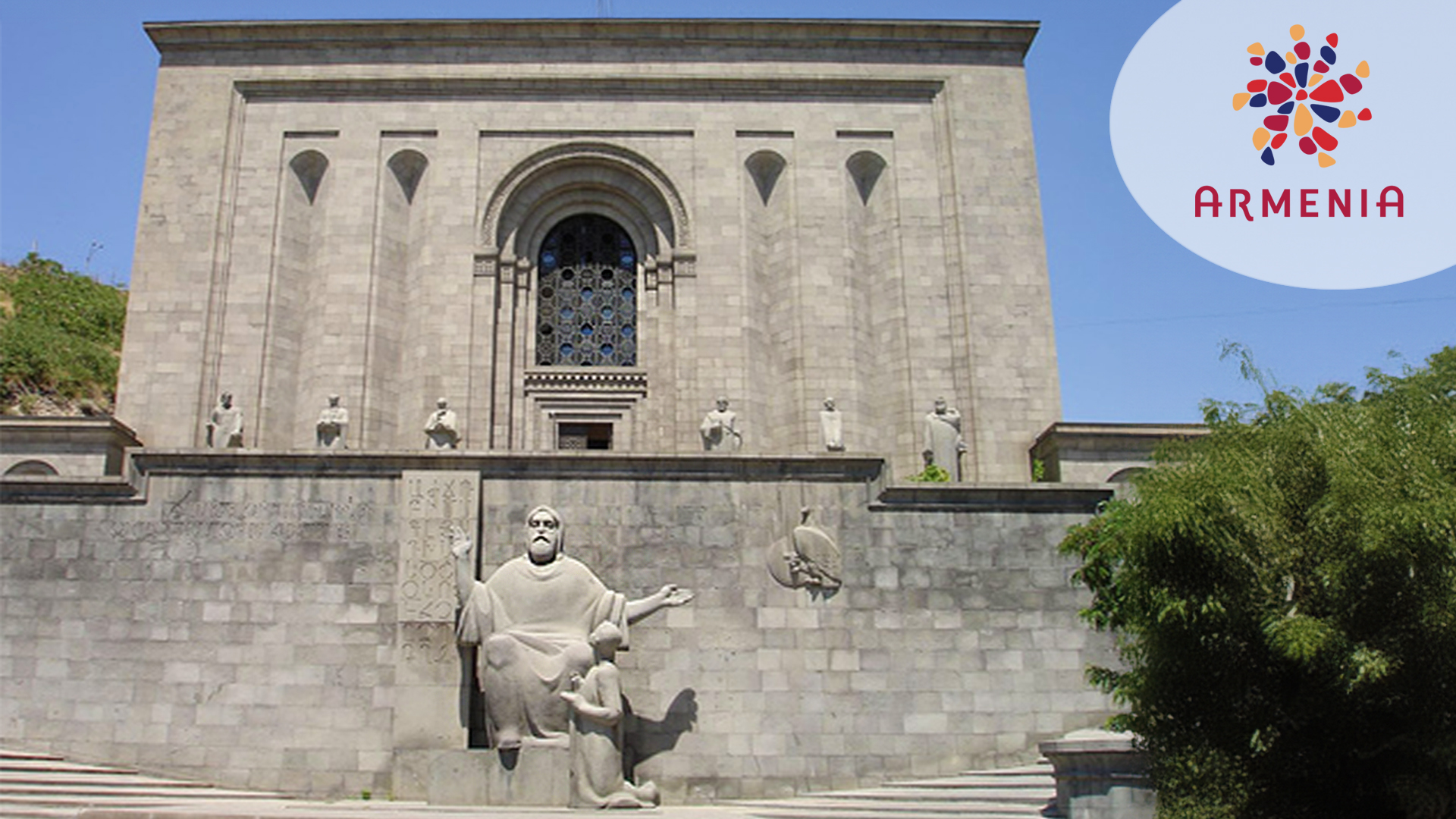
Armenia: Compassionate Souls with Deep Resilience Amidst Adversity.
Armenia is the land of compassion. Having faced a challenging journey from the tragic chapters of its past, such as the Armenian Genocide by the Turks, to recent times hardships like the Azeri violence in Baku, Sumgait, and other cities, and the wars in Artsakh leading to mass depopulation and ethnic cleansing of all Armenians from their ancestral lands in Artsakh. To overcome these traumas, Armenians must embark on a path of self-love, healing, forgiveness, and compassion. By embracing these values and demonstrating resilience as a united people, Armenia can move forward towards a brighter future, rebuilding its cities, communities, and sense of national identity with strength and unity.
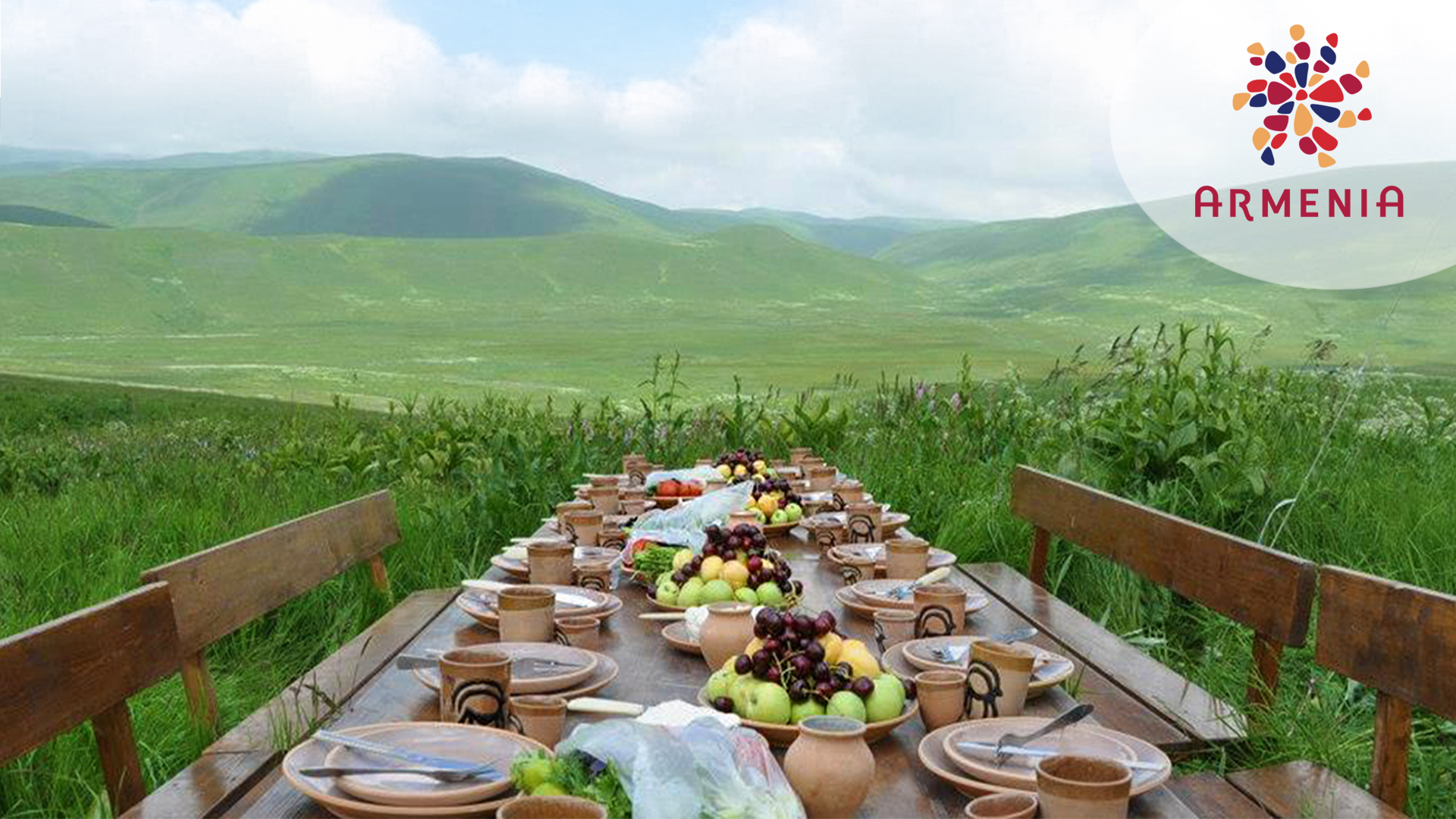
Source:
The sources referenced in the article include historical accounts, research studies, and information from various sources, including Wikipedia, Hrant Dink Foundation, Historical documents on the Armenian Genocide, Academic research on Armenian history, Swiss tourism organizations, Nordic countries’ success stories, Information from official websites of Armenian cultural institutions, Research on Alpine tourism and history, AI: Chat GPT 4o, Google Gemini. Images: Freepik AI, Adobe Stock AI, and other sources.
#Armenia #Culture #Heritage #Unity #Vision



